DashClicks Blog
The industry's top experts offer their best advice, research, how-tos, and insights—all in the name of helping you level-up your business and online marketing skills.
Join Us!

How Smart Agencies Prove SEO Value When Rankings Don’t Budge
When it comes to digital marketing, keyword rankings are often the most obvious way to measure SEO growth. When those results don't move, clients can get angry, stressed, and ready to wonder if their SEO investment was worth it.
This is the point where good agencies grow into great ones. Innovative agencies don't drown their clients in dry, technical data. Instead, they reshape the conversation — helping clients see progress in places that rankings alone can’t capture. That’s why the smartest agencies prove SEO value by focusing on metrics, milestones, and stories that reveal growth beyond keyword charts.
This is also where white label SEO services can make a real difference. By partnering with a white label provider, agencies gain access to expert teams, advanced tools, and proven processes that uncover and highlight these hidden wins. Instead of getting stuck explaining flat rankings, agencies can present clients with deeper insights — like technical improvements, engagement metrics, and conversion trends — all backed by professional reporting that makes progress crystal clear.
Search Engine Optimization Is About More Than Stats
That frustration usually comes from looking at rankings in isolation. But rankings are just one part of the puzzle — SEO often makes progress in ways that aren’t visible on the surface. A lot of the time, clients get obsessed with search rank updates, but that's not the whole story.
SEO is a multi-step process that can make real progress behind the scenes even if ranks don't change right away. When agencies are good at what they do, they shift their attention to useful metrics that show growth and opportunity. Agencies using white label SEO partners can often demonstrate this behind-the-scenes progress more effectively, since providers supply detailed reporting, technical expertise, and benchmarks that highlight improvements clients might otherwise miss.
For sites with heavy media content, working with specialists who understand technical optimization can improve page speed and user experience metrics that often show positive movement before ranking changes become visible, as detailed by SEO consultants.
These metrics can be anything from higher conversion rates to more organic traffic. White label SEO services also give agencies the flexibility to scale these conversations. Instead of being bogged down by execution, they can rely on their partners to handle the technical heavy lifting — freeing them up to focus on communicating value, nurturing relationships, and driving strategy.
These parts show that SEO work is making the base stronger for long-term success. That’s why agencies need to shift the conversation away from static ranks and toward the bigger picture of business impact.
Considering Success
Clients look for clear signs of change, even if their main keywords are stuck.
- The business will get more brand publicity if more people find it through Google.
- You can tell that content is engaging if people stay on your site longer, look at more than one page, and come back.
- Organic search leads that lead to more leads, sign-ups, or sales show that SEO is having a real effect.
- Technical changes like faster load times, mobile friendliness, and smoother navigation make the site better for both users and search engines.
- Finding good backlinks improves the authority of a website and its potential to rank higher in the future.
There is more to these wins than just numbers. They are building blocks for future rating gains.
Of course, pointing to better metrics is only half the battle. Clients want to know exactly what’s being worked on and how their investment is driving these changes.
Build Trust and Transparency
When ranks remain constant, clients want to know what's being done with their investment. Great agencies keep things truthful and open by making ongoing SEO jobs clear.
- Technical problems (site speed, search) have been fixed.
- Making new content that is important.
- Targeted marketing to get backlinks and leverage local citation services to build consistent NAP details across trusted directories.
- Improving the organization and flow of the site.

Image Source: NestleAway
And while transparency builds trust, raw data alone can feel overwhelming. To truly reassure clients, agencies need to tell the story behind the numbers.
Making SEO Data Human and Engaging
Numbers can be boring or hard to understand on their own, but when you add a story to them, they get even more interesting. Using affiliate marketing software helps engage in visualizing data. The best agencies use stories and images to bring SEO data to life. Clients feel more confident and sure that results are on the way because of this continued work.
- Problems with the site's speed and search have been fixed.
- Making new content that is important.
- Planned effort to get backlinks.
- Making the site layout and user navigation better.
This storytelling naturally extends into content — because strong, optimized content compounds in value over time, even when it doesn’t rank immediately.
Not Just Performance, But Also Content Quality
Even if a blog post you write today doesn't rank right away, it could become a top source of traffic in six months. Smart agencies always remind their customers that SEO works overtime. As more information is added to a site, it gains authority and covers more keywords and reaches a wider audience. For example, a guide on how to send mail online might not get immediate traction, but over time, as more users search for digital mailing solutions, it can become a valuable traffic driver.
The more useful and well-optimized content you make, the more valuable your site becomes over time. This is where the idea of "content equity" comes in. Like investments, material pays off over time. That’s why content creation and optimization must be framed within long-term SEO goals, not quick wins.
Set Long-Term SEO Targets
Instead of promising quick wins, great agencies emphasize realistic timelines and steady growth. This is especially important in competitive niches, where Google's algorithm rewards consistency and authority.
Clients are guided to look beyond 30-day reports. A clear SEO roadmap, with milestones like content rollout, backlink acquisition, and technical cleanups, which can be supported by efficient project staffing, keeps everyone focused on the bigger picture.

Setting milestones is key, but equally important is helping clients understand SEO’s very nature: it’s not a short-term campaign, it’s an ongoing relationship.
Why Google SEO Is Not a Campaign, but a Long-Term Relationship?
Search engine optimization (SEO) builds momentum, while paid ads see results that peak and then fade when the budget runs out. They help clients understand that SEO is more like joining a gym than going on a crash diet. You might not see results right away, but every move (technical change, article, link earned) makes your website stronger. Google rewards consistency, trust, and authority — things that can’t be achieved with a one-time campaign.
Think of SEO like nurturing a relationship:
- Consistency Matters – Regular content updates, ongoing technical fixes, and continuous optimization signal to Google that your site is active and trustworthy.
- Authority Takes Time – Building a healthy backlink profile, earning mentions, and strengthening topical expertise doesn’t happen overnight. It requires steady effort and patience.
- User Experience Evolves – As your audience’s needs change, so must your content, design, and site performance. SEO keeps adapting alongside your business.
- Compounding Returns – Each blog post, technical improvement, or earned backlink adds to your “SEO equity,” creating sustainable growth that lasts for years.
In short, SEO isn’t a quick sprint — it’s a long-term partnership between your brand and Google’s algorithms. Agencies that position SEO this way help clients see it as an investment in lasting digital visibility, not a short-lived campaign.
How to Show Value in Flat Rankings?
When ranking changes don't happen, great agencies know that they need to show value in other ways. Among these are-
- Getting links on sites with a lot of authority.
- Generating more views and attention for new keywords.
- More searches for long-tail or low-volume terms.
- Better planning leads to higher conversion rates.
Anytime the needle doesn't move on the surface, it's still a sign that the engine is still working.
What Metrics on User Behavior Actually Show?
Google considers more than just keywords and content when it analyzes your site. Also, it checks out how people use it. These signals tell search engines whether users are finding value, which directly influences long-term rankings. The following facts are pointed out by agencies ro clients because they go beyond “vanity numbers” and show real user satisfaction.
- Reduced Bounce Rates – A lower bounce rate means visitors are staying instead of leaving after the first page. This indicates your content matches their intent and encourages them to explore further. Agencies often tie this to improvements in targeting, keyword alignment, and content quality.
- Improved Session Length – When users spend more time on your site, it’s a sign they’re engaged and consuming your content. Longer sessions often correlate with deeper trust and higher chances of conversion. For example, someone spending five minutes on a product guide is more likely to move down the sales funnel than someone who leaves in 10 seconds.
- Higher Repeat Visitor Rates – A growing percentage of return traffic shows that users find ongoing value and want to come back. This is one of the strongest trust indicators and reflects long-term brand loyalty, something search engines take into account when ranking.
- Pages Per Session – Another valuable indicator is how many pages a user views in one visit. More pages usually mean your internal linking, navigation, and content structure are working well. It shows your site isn’t just answering one question but guiding visitors through their journey.
- Conversions from Organic Traffic – Ultimately, user behavior metrics aren’t just about time on site; they also point to tangible business outcomes. Tracking sign-ups, demo requests, or purchases from organic sessions helps prove the ROI of SEO efforts even when rankings are flat.
By showing these user-focused metrics, agencies help clients understand that SEO progress isn’t always about jumping to the top of Google overnight — it’s about creating a site that people trust, enjoy, and return to, which naturally earns stronger rankings over time.
Why Client Education Is Necessary?
Agencies use client education, which isn't given enough credit but is very effective. Clients are more patient and interested in SEO when they understand why rankings may take time and how it all works. Good agencies don't just hand out reports; they also explain what each change means, what the next step is, and how small wins add up to bigger ones.
Whether it's breaking down keyword meaning or going over crawl budget, being open and educating clients builds trust that lasts. Buyers who are informed become partners, not just buyers.
By walking clients through the process, explaining why changes take time, and showing the smaller wins along the way, agencies replace doubt with confidence. Instead of handing over raw data, they translate reports into stories: what’s been done, why it matters, and what’s coming next.
The payoff? Clients who understand the journey are more patient, more engaged, and more likely to view their agency as a trusted partner rather than just a vendor.
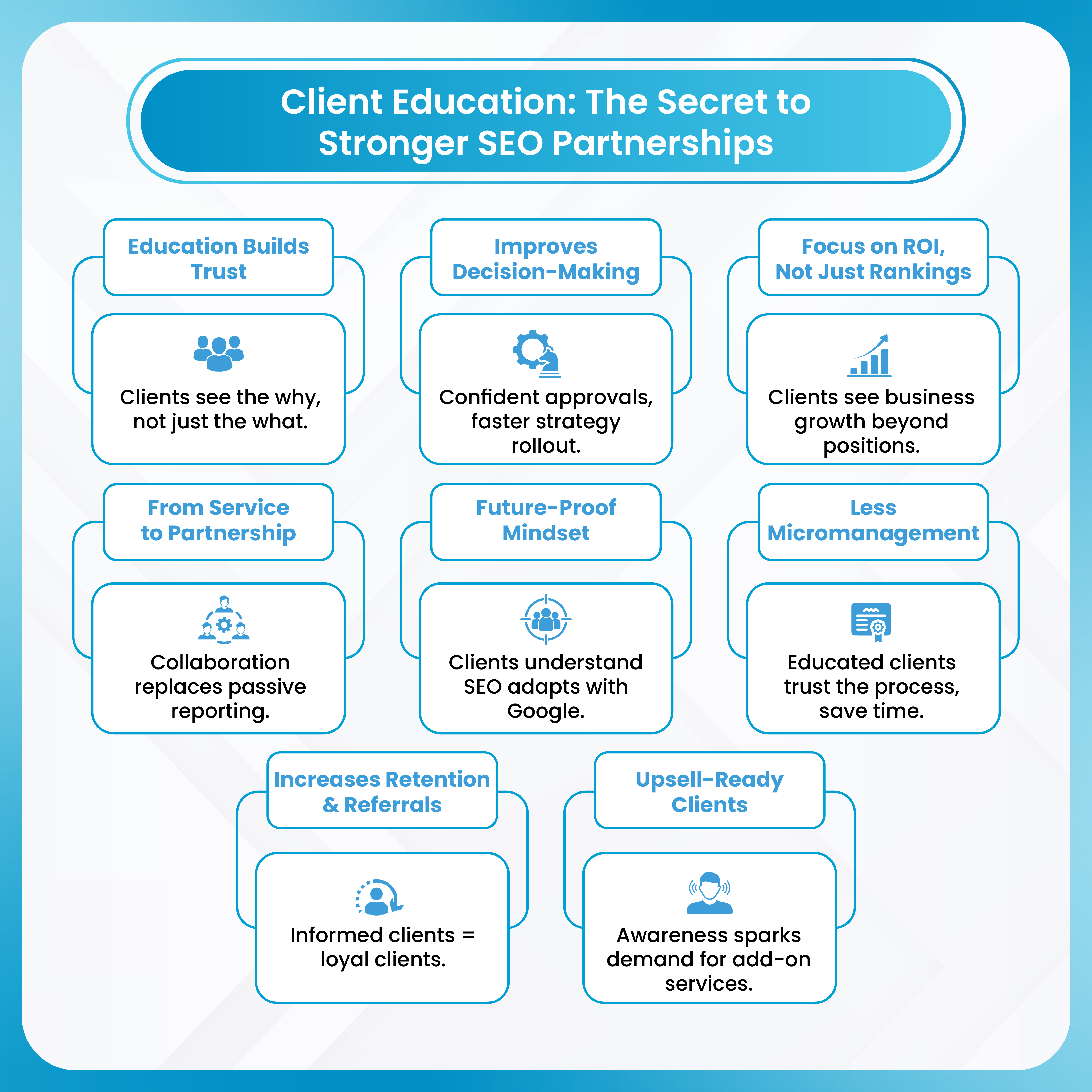
How DashClicks’ White Label SEO Services Help Agencies Showcase Progress?
One of the toughest challenges for agencies is proving value when keyword rankings don’t shift right away. Clients often expect overnight results, but as you know, SEO is a long-term game. That’s where DashClicks’ white label SEO services step in to make your agency’s job easier.
With a full suite of services — from technical audits, site speed optimization, and mobile fixes to ongoing content creation, high-quality backlink outreach, and structured data implementation — DashClicks equips your agency with tangible deliverables you can show clients each month. Even if rankings appear flat, you’ll have clear evidence of improvements in site health, visibility, and user engagement to keep clients confident in their investment.
What sets DashClicks apart is the ability to generate beautiful, branded client reports that translate technical progress into simple, engaging insights. Instead of drowning clients in confusing numbers, you can highlight the wins that matter — stronger website foundations, improved conversions, better user experiences, and expanding visibility across new keywords.
By combining expert SEO execution with transparent reporting, DashClicks helps agencies shift the conversation from “Why aren’t we ranking yet?” to “Here’s how we’re building long-term growth.” This keeps clients informed, builds trust, and turns short-term frustrations into lasting partnerships.
Wrapping It Up
Great SEO companies know that keyword positions aren't the only thing that makes their job valuable. They teach their clients to pay attention to what's useful—trust, user experience, exposure, and conversions. Under the surface, progress is being made even when results don't seem to be changing.
When agencies change the conversation from "Why aren't we ranking yet?" to "Here's how we're strengthening your brand online," they not only keep clients, but they also give them more power. So that's how a vendor-client relationship turns into a long-term partnership.
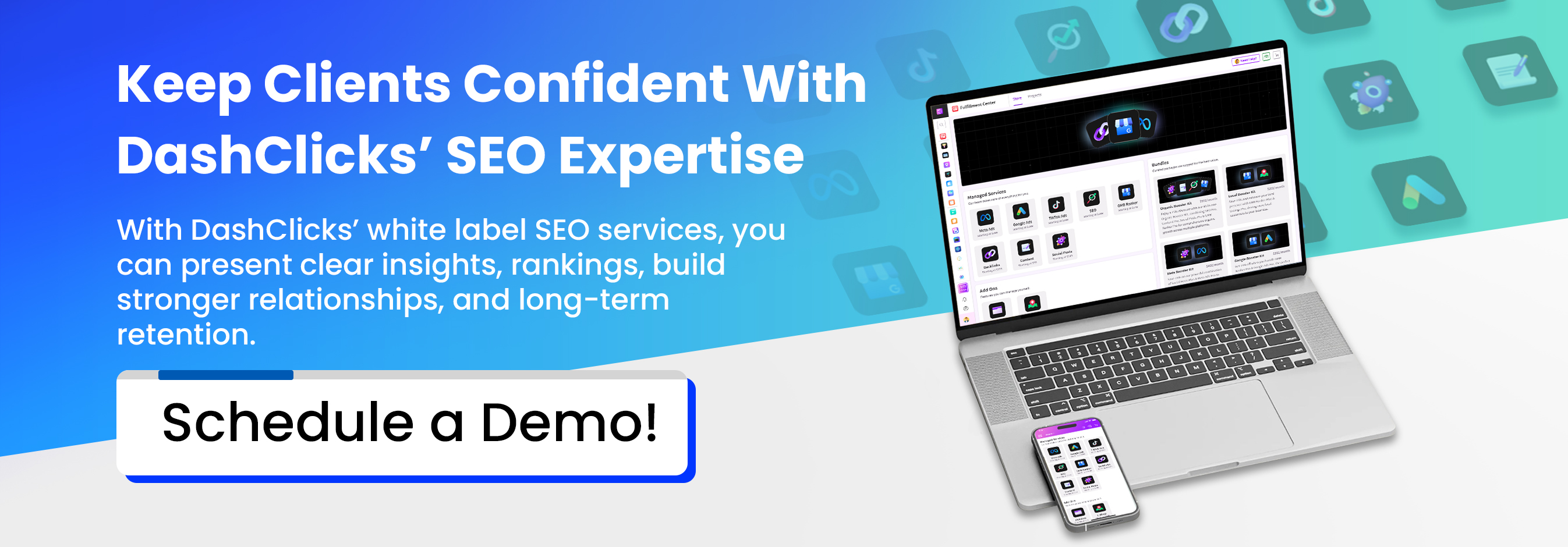

Using White Label SEO to Turn One‑Off Clients into Recurring Accounts
Running a digital marketing agency based on one-time projects feels like being on a never-ending hamster wheel. You complete a website redesign, deliver a social media campaign, or finish a branding project — and then it's back to square one, hunting for the next client to keep your business alive.
The statistics paint a clear picture: 73% of digital marketing agencies report inconsistent revenue streams because they rely heavily on one-time projects. This creates a cycle where agencies spend more time chasing new clients than actually growing their existing relationships.
But what if you could flip this script? What if those same clients who hired you for a single project could become the foundation of predictable, recurring revenue that grows month after month?
White label SEO services offer exactly this opportunity. By positioning SEO as an ongoing growth engine rather than a one-time fix, agencies can transform their entire business model from feast-or-famine to steady, scalable growth.
Why One-Off SEO Projects Rarely Work Long-Term?
SEO operates as an ongoing process, not a one-time solution. Search algorithms update constantly, competitors adjust strategies, and content requirements evolve continuously. Treating SEO as a project with a defined endpoint fundamentally misunderstands how search optimization works.
Quick wins exist within SEO implementation. Technical fixes, basic on-page optimization, and initial content improvements can show immediate results. However, real ROI develops through consistent optimization, continuous content development, and ongoing technical maintenance.
One-off projects create significant business risks for agencies:
- Unpredictable Cash Flow: Project completion eliminates revenue streams immediately.
- Costly Client Acquisition: Constantly seeking new clients increases sales costs.
- Wasted Relationship Building: Initial client education and trust development becomes a one-time investment.
- Limited Growth Potential: Project capacity restrictions prevent scaling beyond team limitations.
White label SEO reseller partnerships address these limitations by enabling agencies to offer ongoing optimization without internal resource constraints. This model transforms SEO from a finite project into an "always-on" growth engine for clients.
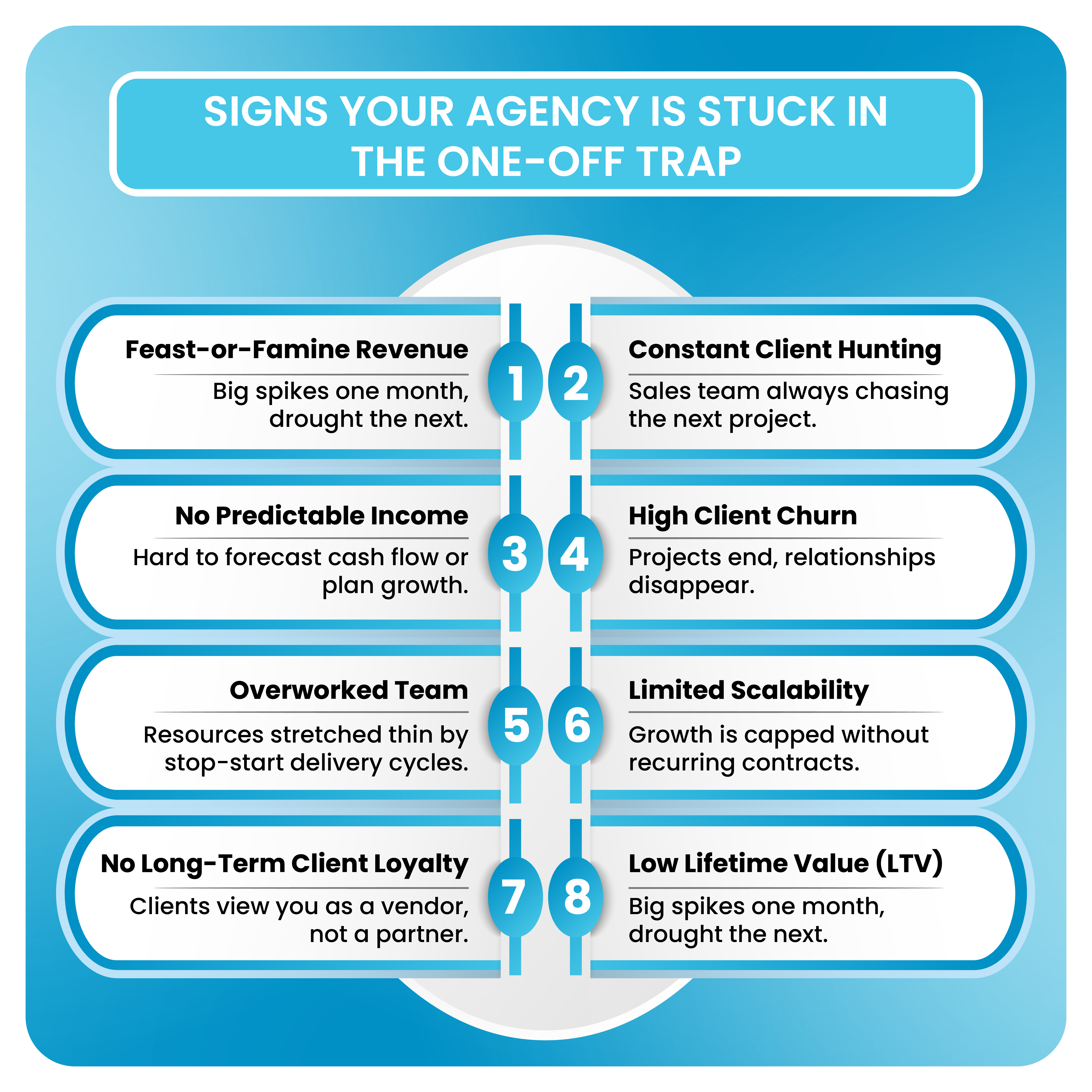
Why White Label SEO Creates Perfect Recurring Revenue?
White label SEO partnerships solve the core challenge of scaling ongoing SEO delivery without the massive overhead of building an entire in-house team. Instead of hiring SEO specialists, content writers, link builders, and technical experts, agencies can partner with established providers who already have these resources.
SEO naturally fits the recurring revenue model because it requires consistent, ongoing work:
- Algorithm updates demand regular strategy adjustments.
- Competitor activity requires continuous monitoring and response.
- Content creation needs to happen regularly to maintain rankings.
- Link building is an ongoing process, not a one-time effort.
- Technical maintenance prevents issues that could hurt rankings.
When agencies position SEO as an "always-on" growth engine rather than a project with a clear end date, clients understand the value of continuous investment. The benefits compound over time, making the monthly investment increasingly valuable.
Consider the math: A $5,000 one-time website project generates revenue once. But converting that same client to a $2,000/month ongoing SEO retainer creates $24,000 in annual recurring revenue from a single relationship.
The Recurring Revenue Advantage: Why Agencies Are Making the Switch?
Agencies that successfully make this transition see dramatic improvements in their business fundamentals.
1. Predictable Cash Flow
Monthly recurring revenue stabilizes business operations completely. Instead of the feast-or-famine cycle common in project-based agencies, MRR provides consistent income for strategic planning.
Example Calculation: An agency with 20 clients at $3,000/month generates $60,000 in predictable monthly revenue. This consistency enables:
- Strategic Hiring: Plan team expansion based on guaranteed income.
- Technology Investments: Upgrade tools and systems with confidence.
- Business development: Allocate resources for growth initiatives without cash flow concerns.
2. Unlimited Scalability
White label SEO partnerships remove the traditional constraints on agency growth. Instead of being limited by internal team capacity, agencies can take on as many clients as they can acquire and manage relationships for.
The math works in the agency's favor. While an internal SEO team of 5 specialists might handle 15-20 clients effectively, a white label SEO partnership can support 100+ client relationships with the same level of service quality.
A case study from the industry shows an agency that scaled from 10 clients to over 100 clients within 18 months using white label SEO services, growing their monthly recurring revenue from $30,000 to over $300,000.
Further Reading: From 5 to 50 Clients: Scaling Strategies Using SEO Reselling
3. Enhanced Client Relationships
Recurring revenue relationships naturally create deeper partnerships. Instead of a transactional dynamic where the agency delivers a project and moves on, ongoing SEO services position the agency as a strategic partner in the client's growth.
Clients share more information about their business challenges, plans, and growth goals. This deeper relationship increases trust and makes clients much less likely to switch providers. Agencies that transition clients to recurring service agreements consistently see significantly higher customer lifetime value—studies suggest increases of 25% or more compared to project-based clients.
Conversion Strategies: Turning One-Time Clients into Recurring Revenue
The transition from project-based to recurring revenue requires a strategic approach to client conversations and service packaging.

1. The Transition Consultation
Project completion creates the perfect opportunity for recurring revenue conversations. Use this transition consultation script:
Opening: "Your initial SEO foundation is complete, but maintaining and expanding these results requires ongoing optimization. Let me show you what continued growth looks like."
ROI Demonstration: Present specific data showing potential for continued improvement. Example: "Your current rankings average position 8-12. Ongoing optimization typically moves these to positions 3-6, increasing traffic by 200-400%."
Effective Transition Script:
"Now that we've completed your website redesign, I want to make sure you get maximum value from this investment. The site looks great, but the real opportunity is in driving qualified traffic to it. Based on what I've seen with similar businesses, companies that invest in ongoing SEO typically see 2-3x more leads within the first six months. Can we schedule 30 minutes to discuss what that might look like for your business?"
Address Common Objections Proactively:
- "We don't have budget for ongoing services" — Position it as maximizing their existing investment rather than a new expense.
- "We want to see results from the website first" — Explain that without ongoing SEO, the website won't reach its traffic potential.
- "We're not sure SEO is worth it" — Share specific case studies and ROI examples from similar businesses.
- "Unclear ongoing needs": "Algorithm updates occur monthly. Competitors launch new campaigns constantly. Your optimization needs continuous attention."
2. Package Structuring for Success
Create clear service tiers that make it easy for clients to choose an appropriate level of ongoing support:
Starter Package ($1,500/month):
- Monthly technical SEO audit and fixes
- 4 optimized blog posts per month
- Basic local SEO management
- Monthly performance reporting
Professional Package ($3,000/month):
- Everything in Starter, plus
- 8 blog posts per month
- 10 high-quality backlinks per month
- Competitor analysis and strategy updates
- Quarterly strategy review calls
Enterprise Package ($5,000+/month):
- Everything in Professional, plus
- Custom content calendar aligned with business goals
- Advanced link-building campaigns
- Social media content optimization
- Monthly strategy calls with a dedicated account manager
3. The Soft Transition Method
Reduce client commitment anxiety by offering trial periods with performance guarantees.
- 3-Month Trial Periods: Lower initial commitment barriers while demonstrating ongoing value.
- Performance Guarantees: "If rankings don't improve within 90 days, receive a full refund."
- Data-Driven Justification: Use initial project results to project ongoing improvement potential.
Sample Guarantee: "If we don't increase your organic website traffic by at least 25% within 90 days, we'll refund your investment and continue working for free until we hit that goal."
Client Retention Mastery: Keeping Recurring Revenue Flowing
Once clients commit to recurring SEO services, retention becomes the top priority for sustainable growth.
1. Transparent Communication Protocols
Clients need to understand what's happening with their SEO investment every month. Create standardized reporting that shows:
- Ranking improvements for target keywords.
- Organic traffic growth with clear trend lines.
- Content performance metrics and top-performing pages.
- Backlink acquisition progress and domain authority improvements.
- Competitive landscape updates and strategic responses.
Monthly reports should arrive on the same date each month with consistent formatting.
Monthly Reporting Schedules:
- First week: Performance data compilation using white label SEO reporting tools.
- Second week: Analysis and insight development.
- Third week: Client presentation and strategy discussion.
- Fourth week: Implementation planning for the following month.
Client Portal Access: Provide real-time performance tracking through branded dashboards. Clients can monitor progress independently, reducing anxiety about investment value.
Proactive Communication: Alert clients immediately about algorithm changes, competitive threats, or optimization opportunities. Position your agency as a strategic advisor, not just a service provider.
2. Delivering Consistent Value
Balance quick wins with long-term strategic improvements. In the first 90 days, focus on technical fixes and optimizations that can show immediate results. Then shift toward content and link-building strategies that create compound growth over time.
Quick Wins to Prioritize:
- Fix technical SEO issues that are easy to resolve.
- Optimize existing high-traffic pages for better conversion.
- Claim and optimize Google Business Profile for local businesses.
- Create location-specific landing pages for service-based businesses.
Long-Term Strategic Work:
- Develop comprehensive content calendars aligned with business goals.
- Build domain authority through strategic link building.
- Create resource pages and tools that attract natural backlinks.
- Develop topic clusters that establish expertise in key areas.
Customization Strategies:
- Adapt approaches based on client industry requirements.
- Adjust tactics for different competition levels.
- Scale strategies according to business growth goals.
3. Client Education and Partnership
Transform clients from passive recipients to engaged partners:
SEO Education Initiatives:
- Monthly webinars explaining current optimization strategies.
- Industry trend reports with specific implications for client businesses.
- Best practice guides for client-side implementation.
Strategic Positioning: Present your agency as a growth partner rather than a service vendor. Regular strategy reviews should focus on business impact, not just SEO metrics.
Value Demonstration: Connect SEO improvements directly to business outcomes. Show how ranking improvements translate to lead generation, revenue growth, and competitive advantages.

Advanced Retention Techniques: Going Beyond Basic SEO
1. Service Expansion Opportunities
Identify complementary services that increase monthly recurring revenue per client:
- PPC Management Integration: Combine organic and paid search strategies for comprehensive search marketing.
- Social Media Optimization: Extend content strategies across social platforms
- Content Marketing Expansion: Develop comprehensive content programs beyond SEO-focused pieces
Cross-Sell Strategies:
- Present expanded services as natural extensions of existing SEO work.
- Use performance data to justify additional service investments.
- Offer bundled pricing for multiple service combinations.
White Label SEO Partner Capabilities: Ensure your white label SEO service can support expanded offerings or connect with complementary service providers.
2. Performance Milestone Celebrations
Track and communicate major achievements to reinforce investment value:
Milestone Identification:
- First-page rankings for target keywords.
- Traffic growth milestones (50%, 100%, 200% increases).
- Conversion rate improvements.
- Revenue attribution to organic search.
Communication Strategies:
- Dedicated celebration emails highlighting specific achievements.
- Quarterly business reviews showcase cumulative impact over time.
- Success story development for case studies and referral generation.
3. Proactive Account Management
Don't wait for clients to ask questions or raise concerns. Proactive communication prevents small issues from becoming retention problems.
Best Practices:
- Schedule quarterly business reviews to discuss performance and upcoming opportunities.
- Send proactive updates when algorithm changes might affect their rankings.
- Share relevant industry insights and trends that could impact their business.
- Provide strategic recommendations based on competitive analysis.
Measuring Success: KPIs for White Label SEO Recurring Revenue
1. Monthly Recurring Revenue (MRR) tracking:
- Growth targets: Aim for 10-15% monthly MRR increases.
- Retention rate benchmarks: Target 90%+ monthly retention.
- Expansion revenue: Track average revenue per account growth over time.
2. Client Retention Analysis:
- Churn rate monitoring with root cause analysis.
- Renewal rate tracking by service tier.
- Client satisfaction scoring through regular surveys.
3. Revenue Optimization Metrics:
- Average client lifetime value calculations.
- Revenue per client growth trends.
- Service expansion success rates.
4. Performance Indicators:
- White label SEO service quality scores.
- Client results achievement rates.
- Competitive benchmarking against project-based agencies.
How DashClicks Enables White Label SEO Success?
DashClicks provides the complete infrastructure agencies need to transform one-time clients into recurring revenue relationships. Their white label SEO services handle the entire delivery process while allowing agencies to maintain their brand relationship with clients.
The platform includes comprehensive SEO services from technical audits to content creation and link building. Agencies can order services through a simple online interface, track progress through detailed reporting, and access everything under their own branding.
What sets DashClicks apart is its focus on agency growth. They provide training resources to help agencies have more effective client conversations about ongoing SEO needs. Their client reporting tools make it easy to demonstrate value every month, which is crucial for retention.
The scalability is impressive. Agencies can start with a few clients and grow to hundreds without worrying about delivery capacity or service quality. DashClicks handles the fulfillment while agencies focus on client relationships and business development.
With over 1,500 verified reviews averaging 4.9/5 stars across platforms like Google, Capterra, and G2, DashClicks has proven its ability to support agency growth at scale.
Building Your Recurring Revenue Foundation
The transformation from project-based agency to recurring revenue powerhouse doesn't happen overnight, but the opportunity has never been clearer. Agencies that make this transition successfully create more stable, scalable, and profitable businesses.
White label SEO partnerships remove the biggest barriers to offering ongoing services: the need to hire specialists, manage complex delivery processes, and maintain quality at scale. Instead, agencies can focus on what they do best — building client relationships and growing their business.
The immediate next steps are straightforward:
- Evaluate white label SEO partners based on service quality, reporting capabilities, and agency support.
- Develop client conversation scripts for transitioning project relationships to recurring agreements.
- Create service packages with clear deliverables and pricing that make sense for your market.
- Build processes for onboarding recurring clients and managing ongoing relationships.
The vision is compelling: predictable seven-figure annual recurring revenue built on strong client partnerships rather than the constant pressure of finding the next project.
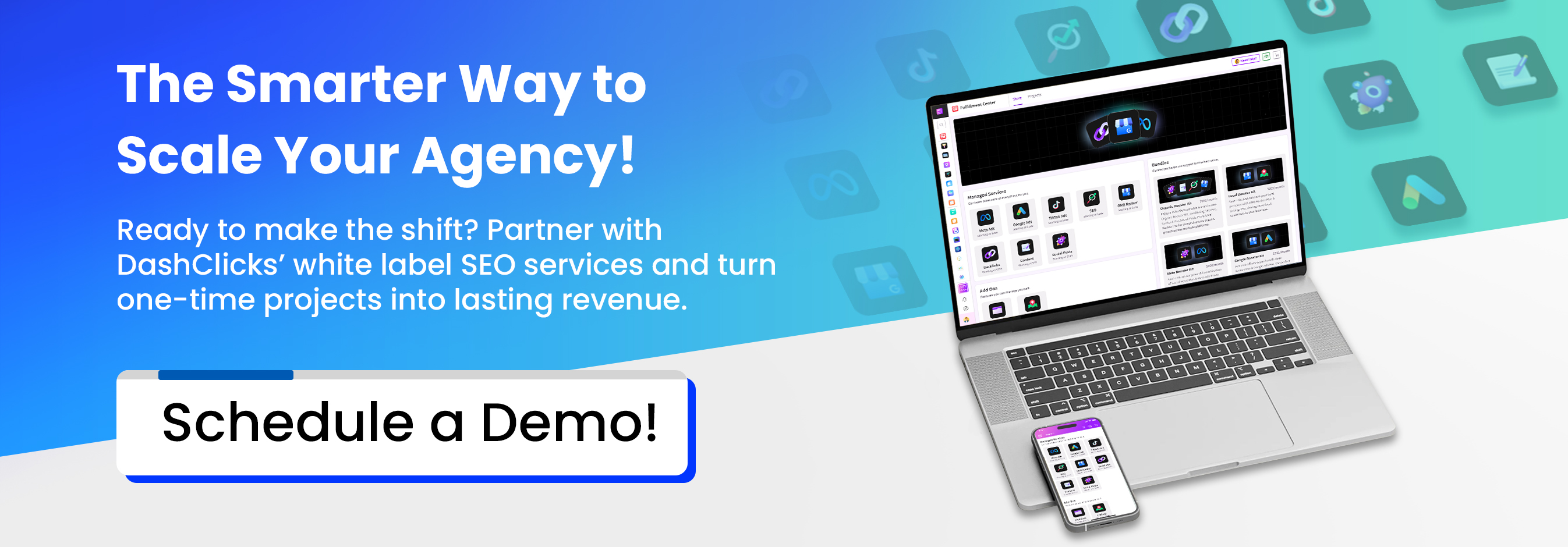

Streamlining SEO Delivery: SOPs for Agencies Using a White Label SEO Partner
Did you know that 73% of marketing agencies struggle with inconsistent project delivery? This challenge becomes even more complex when managing multiple SEO clients simultaneously. From juggling keyword research tasks to coordinating technical audits, agencies often find themselves overwhelmed by the sheer volume of moving parts in SEO campaigns.
The solution lies in creating robust Standard Operating Procedures (SOPs) that work seamlessly with white label SEO partnerships. When agencies combine well-crafted SOPs with reliable white label SEO services, they can transform chaotic workflows into streamlined operations that deliver consistent results.
This comprehensive guide will show you how to create effective SOPs for agencies using a white label SEO partner. You'll learn how to eliminate bottlenecks, improve client satisfaction, and scale your agency operations without sacrificing quality. We'll also explore how the right technology partner can amplify these benefits and help your agency achieve sustainable growth.
The Power of SOPs in SEO Agencies
Standard Operating Procedures serve as the backbone of efficient SEO delivery. These detailed, step-by-step instructions standardize how your team handles everything from client onboarding to monthly reporting. For SEO agencies' SOPs, the goal is to create a repeatable system that produces consistent results regardless of which team member executes the tasks.
The benefits of implementing SOPs extend far beyond simple task management:
- Improved Task Delegation: Clear procedures make it easier to assign work to team members with confidence.
- Consistent Deliverables: Every client receives the same high-quality service, regardless of who's managing their account.
- Minimized Errors: Documented processes reduce the likelihood of missed steps or overlooked details.
- Reduced Back-and-Forth: When your white label SEO partner knows exactly what to expect, communication becomes more efficient.
- Smoother Client Onboarding: New clients can be brought up to speed quickly using established workflows.
- Enhanced Accountability: Team members know exactly what's expected and can track their progress against defined standards.
- Better Performance Tracking: Standardized processes make it easier to identify bottlenecks and measure improvements.
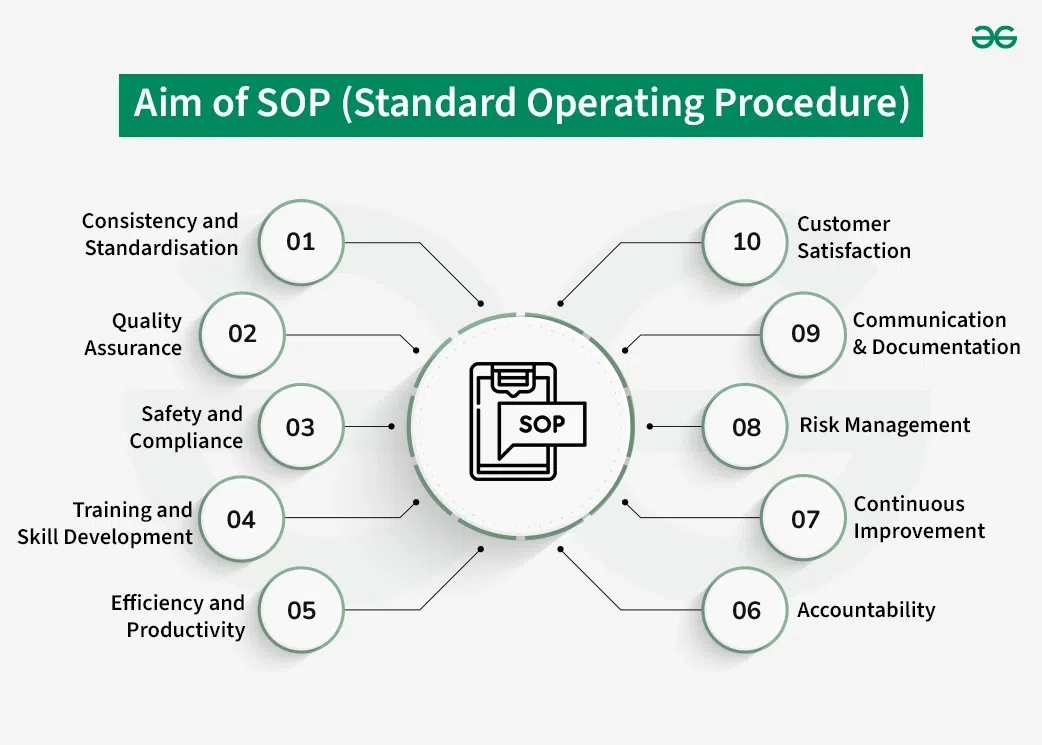
Image Source: GeeksforGeeks
Consider this example: A digital marketing agency implements a detailed SOP for client onboarding that includes information gathering templates, initial audit procedures, and goal-setting frameworks. With this system in place, they reduced their average onboarding time from two weeks to five days while improving client satisfaction scores by 40%.
Creating effective SOPs requires input from your entire team. The people who perform the work often have the best insights into potential improvements. Schedule regular review sessions to update procedures based on real-world experience and changing industry standards.
Technology plays a crucial role in modern SOP management. Project management platforms can automate workflow triggers, while template libraries ensure consistent document formatting across all client interactions.
The Hidden Struggles of SEO Delivery (And How SOPs Solve Them)
SEO agencies face unique operational challenges that can derail even the most promising client relationships. Understanding these pain points is the first step toward building SOPs that address real-world problems.
1. Miscommunication Between Team Members
When team members lack clear instructions, simple tasks can go wrong quickly. A content writer might optimize for the wrong keywords, or a link-building specialist might target inappropriate domains. These mistakes waste time and damage client relationships.
SOPs solve this by providing detailed instructions that leave no room for interpretation. When everyone follows the same keyword research checklist or uses identical outreach templates, the entire team stays aligned.
2. Process Bottlenecks That Slow Project Delivery
Many agencies struggle with workflow bottlenecks, where work accumulates at specific stages. Technical audits might take weeks to complete, or content approval processes might stall campaigns entirely.
Well-designed SOPs identify these bottlenecks and create alternative workflows. For example, an SOP might establish parallel processes where technical improvements happen simultaneously with content creation rather than sequentially.
3. Poor Task Visibility Across Projects
Without clear tracking systems, project managers lose sight of individual tasks and deadlines. This leads to missed deliverables and frustrated clients who don't understand why their campaigns aren't progressing.
SOPs establish standardized reporting and tracking procedures, providing everyone with visibility into project status. When combined with project management tools, these procedures ensure nothing falls through the cracks.
4. Inconsistent Quality Control
Different team members might have varying standards for what constitutes "complete" work. One person's keyword research might include 50 terms while another's includes 200, creating confusion for clients who expect consistent deliverables.
Quality control SOPs establish minimum standards and review procedures that ensure every deliverable meets the same criteria before reaching the client.
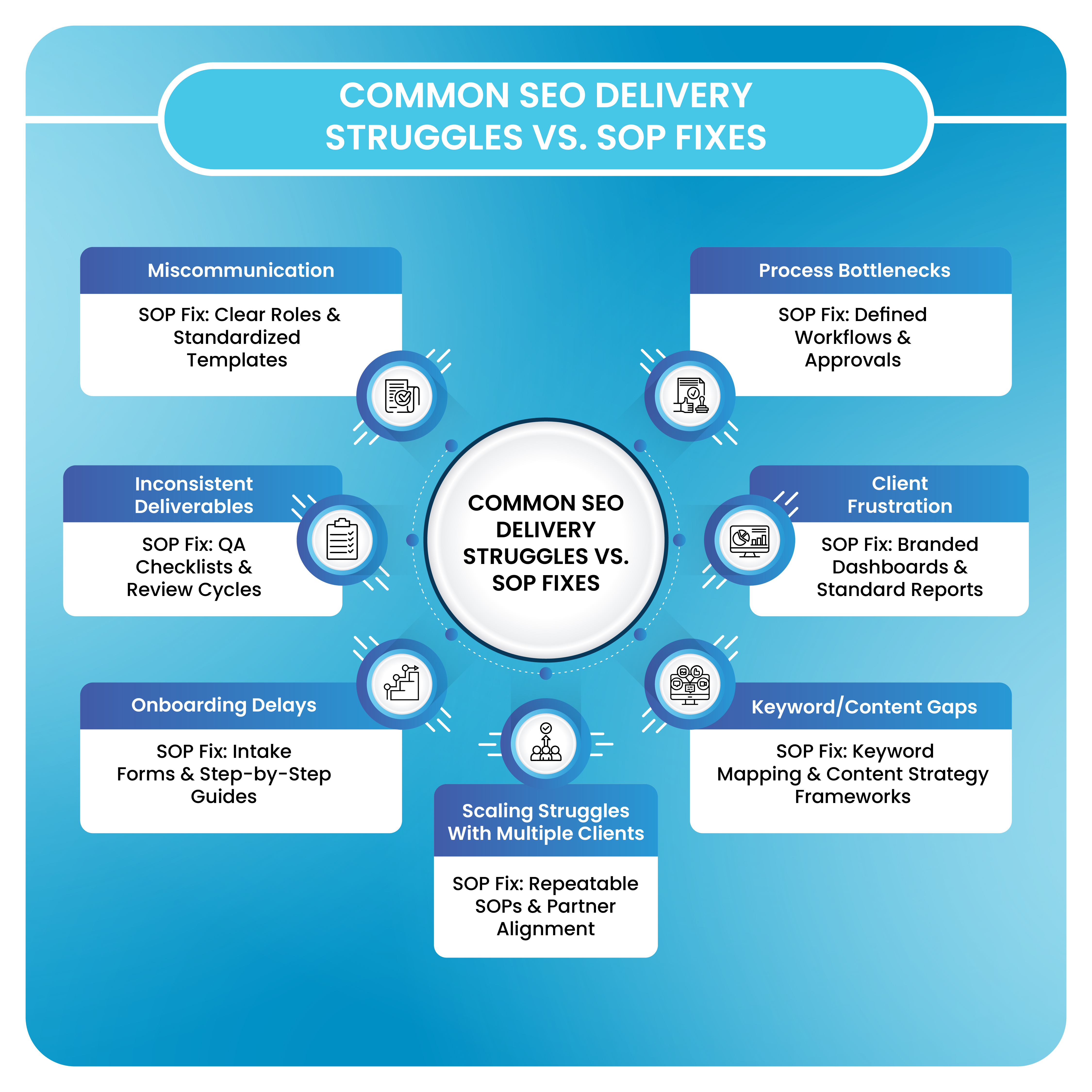
Core Areas Where SOPs Streamline SEO Delivery
Effective SEO delivery requires coordination across multiple specialized areas. Let's examine how SOPs improve each critical component:
1. Client Onboarding SOPs
Smooth onboarding sets the foundation for a successful agency-client relationship. Your SOP should include:
- Standardized Intake Forms: Collect the same information from every client using consistent templates.
- Goal-Setting Frameworks: Help clients articulate realistic expectations and measurable objectives.
- Initial Audit Procedures: Conduct comprehensive website assessments using identical criteria.
- Kickoff Meeting Agendas: Ensure every client relationship starts with clear communication about processes and timelines.
2. Keyword Research & Content Strategy SOPs
Content drives SEO success, but only when it's strategically planned and consistently executed:
- Research Methodology Checklists: Use the same tools and criteria for every keyword analysis.
- Content Mapping Templates: Connect keywords to specific pages and content types systematically.
- Editorial Calendar Procedures: Plan content publication schedules that align with SEO goals.
- Approval Workflows: Establish clear processes for content review and client feedback.
3. On-Page & Technical SEO SOPs
Technical optimization requires attention to detail that SOPs can help standardize:
- Site Audit Checklists: Review the same technical elements for every client website.
- Optimization Templates: Apply consistent formatting and structure to title tags, meta descriptions, and headers.
- Quality Assurance Procedures: Verify that white label SEO partner work meets your agency's standards before client delivery.
4. Link-Building SOPs
Link acquisition requires careful coordination between strategy and execution:
- Domain Vetting Criteria: Apply consistent standards when evaluating potential link sources.
- Outreach Templates: Use proven messaging that maintains your brand voice across all communications.
- Tracking Procedures: Monitor link placement and measure campaign effectiveness using standardized metrics.
5. Reporting SOPs
Regular reporting keeps clients informed and demonstrates campaign value:
- Dashboard Standardization: Use consistent formatting and metrics across all client reports.
- Reporting Schedules: Establish regular communication cadences that meet client expectations.
- Performance Summary Templates: Present data in ways that highlight progress toward stated goals.
Unlocking Opportunities With White Label SEO Partners
White label SEO for agencies represents a strategic approach to scaling operations without the overhead of building specialized in-house teams. Unlike traditional outsourcing arrangements, white label partnerships integrate seamlessly with your existing workflows while maintaining your brand identity.
The synergy between SOPs and white label SEO services creates powerful operational advantages:
- Cost Efficiency Without Quality Compromise: Building an in-house SEO team requires significant investment in hiring, training, and retaining specialized talent. White label SEO partnership provides immediate access to expert-level skills at a fraction of the cost, while SOPs ensure that external work meets your quality standards.
- Access to Specialized Expertise: SEO encompasses numerous technical disciplines that require years of experience to master. A white label SEO partner brings deep expertise in areas like technical auditing, link acquisition, and content optimization that might be difficult to develop internally.
- Seamless Workflow Integration: The right white label SEO partner adapts to your existing processes rather than forcing you to change your operations. When combined with well-designed SOPs, this integration becomes nearly invisible to your clients.
- Scalable Growth Opportunities: White label SEO partnerships allow agencies to take on more clients without the lengthy process of hiring and training new team members. SOPs ensure that service quality remains consistent as you scale operations.
Consider how one mid-sized agency transformed its operations: By partnering with a white label SEO provider and implementing comprehensive SOPs, they increased their client capacity from 15 to 45 accounts while reducing their internal team size. Client satisfaction scores improved because the standardized processes eliminated the inconsistencies that had previously plagued their service delivery.
Crafting Effective SOPs for Seamless SEO Delivery
Creating SOPs that improve your operations requires a systematic approach.

Image Source: WorkTrek
Follow these seven steps to build procedures that enhance rather than hinder your team's effectiveness:
Step 1: Identify Core SEO Processes
Start by mapping out every task involved in your SEO delivery. Common processes include:
- Keyword Research and Analysis
- Technical Website Auditing
- Content Planning and Optimization
- Link Building and Outreach
- Performance Tracking and Reporting
- Client Communication and Updates
Don't overlook smaller tasks that might seem obvious. These often cause the most confusion when left undocumented.
Step 2: Define Agency vs. Partner Roles
Clear role definition prevents overlap and ensures accountability. Create a responsibility matrix that shows exactly who handles each task:
- Agency Responsibilities: Client communication, strategy development, quality control.
- Partner Responsibilities: Technical implementation, content creation, and link acquisition.
- Shared Responsibilities: Reporting preparation, campaign monitoring.
Step 3: Break Down Processes Into Actionable Tasks
Transform broad processes into specific, measurable actions. Instead of "conduct keyword research," write:
- Identify primary keywords for target pages.
- Analyze competitor keyword gaps.
- Create a keyword mapping spreadsheet using the provided template.
- Submit the keyword list for client approval within 48 hours.
Step 4: Use Multiple Documentation Formats
Different team members learn and process information differently. Provide instructions in various formats:
- Written Procedures: Detailed step-by-step instructions.
- Flowcharts: Visual representations of decision points and workflows.
- Video Tutorials: Screen recordings that demonstrate software usage.
- Checklists: Quick reference guides for task completion.
Step 5: Incorporate Team Feedback
Your team members are the best source of information about what works and what doesn't. Schedule regular feedback sessions to:
- Identify bottlenecks in current procedures.
- Gather suggestions for process improvements.
- Test new workflows before full implementation.
- Address training needs and knowledge gaps.
Step 6: Align SOPs With Partner Processes
Your white label SEO partner should understand and integrate with your procedures. Share relevant SOPs and:
- Establish communication protocols that match your standards.
- Provide templates and guidelines that maintain brand consistency.
- Create feedback loops that allow continuous process refinement.
- Set quality standards that align with client expectations.
Step 7: Implement Quality Control Systems
Quality control ensures that SOPs are followed consistently:
- Random Audits: Review completed work against SOP checklists.
- Peer Reviews: Have team members check each other's work.
- Client Feedback Integration: Use client comments to identify process gaps.
- Performance Metrics: Track completion times and error rates to measure SOP effectiveness.
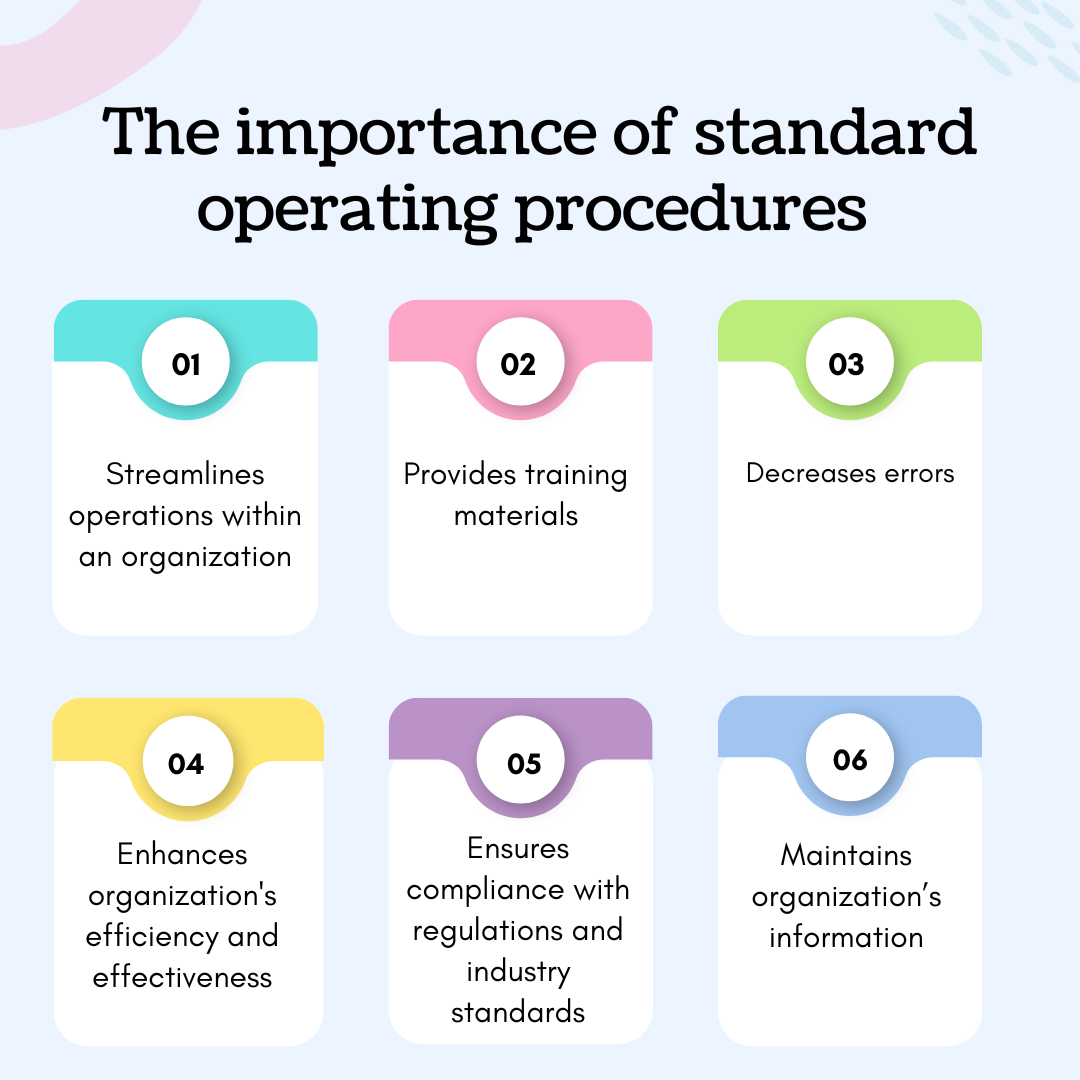
Image Source: BoldDesk
Measuring the Impact of SOPs in SEO Agencies
Implementing SOPs is only valuable if they improve your operations. Track these key metrics to measure the effectiveness of your procedures:
1. Client Retention Rate
This metric shows the percentage of clients who continue working with your agency over specific periods. Well-implemented SOPs typically improve client retention by:
- Delivering more consistent results.
- Reducing communication gaps.
- Meeting deadlines more reliably.
- Providing clearer reporting and updates.
Agencies with effective SOPs often see client retention rates improve by 20-30% within the first year of implementation.
2. Project Turnaround Time
Measure how quickly you complete different types of projects, from initial audits to monthly reporting. SOPs should reduce turnaround times by:
- Eliminating confusion about task requirements.
- Reducing back-and-forth communication.
- Standardizing approval processes.
- Creating parallel workflows where possible.
3. Team Efficiency Metrics
Track how SOPs affect your team's productivity:
- Tasks completed per team member per week.
- Average time spent on specific procedures.
- Frequency of errors or rework requirements.
- Time saved through process automation.
4. Client Satisfaction Scores
Regular client feedback reveals how SOPs impact the client experience. Look for improvements in:
- Communication clarity and frequency.
- Deliver quality and consistency.
- Project transparency and updates.
- Overall satisfaction with agency performance.
When SOPs and white label SEO services work together effectively, agencies typically see measurable improvements across all these metrics. The standardized processes create predictability that clients appreciate, while the reliable partner support allows internal teams to focus on strategy and relationship management.
Future Trends in SOPs and SEO Project Management
The SEO industry continues evolving rapidly, and your SOPs must adapt to remain effective. Several trends are shaping how agencies approach process management:
1. Automation and AI Integration
Artificial intelligence is transforming how SEO work gets done. Modern automation tools can:
- Generate keyword research reports automatically.
- Identify technical SEO issues without manual auditing.
- Create content outlines based on competitive analysis.
- Monitor rankings and alert teams to significant changes.
Smart agencies are updating their SOPs to incorporate these tools while maintaining human oversight for strategic decisions.
2. Advanced White Label Partnerships
White label SEO partners are adopting sophisticated technologies that streamline service delivery. These include:
- AI-powered content creation tools that maintain brand voice consistency.
- Automated reporting systems that update client dashboards in real-time.
- Predictive analytics platforms that forecast campaign performance.
- Integrated communication tools that keep all stakeholders informed.
3. Adaptive Workflow Management
Google's algorithm updates and industry changes require SOPs that can adapt quickly. Future-focused agencies are building flexibility into their procedures by:
- Creating modular SOPs that can be updated independently.
- Establishing rapid response protocols for algorithm changes.
- Building feedback loops that identify needed process changes quickly.
- Training teams to think strategically about process improvement.
The agencies that thrive will be those that view SOPs as living documents rather than static procedures. Regular reviews and updates ensure that your processes continue serving your clients effectively as the industry evolves.
How DashClicks Streamlines SEO Delivery for Agencies?
DashClicks provides a comprehensive solution for agencies looking to implement effective SOPs while leveraging white label SEO partnerships. The platform combines project management tools, standardized workflows, and integrated fulfillment services that work together seamlessly.
The DashClicks approach to streamlining SEO delivery includes several key components that directly support SOP implementation. Their project management system allows agencies to create standardized workflows that automatically guide team members through each step of the SEO delivery process. When combined with their white label SEO services, agencies can maintain consistent quality while scaling their operations efficiently.
What sets DashClicks apart is its integration of software and services under a single platform. Agencies can manage client relationships, track project progress, and coordinate with fulfillment teams without switching between multiple systems. This unified approach makes it easier to implement and maintain SOPs because all team members work within the same environment.
The platform also includes built-in reporting tools that standardize how agencies present results to clients. Rather than creating custom reports for each account, agencies can use DashClicks' automated reporting features to deliver consistent, professional updates that align with their SOPs.
For agencies serious about implementing effective SOPs while leveraging white label partnerships, DashClicks offers both the technology infrastructure and the fulfillment capabilities needed to succeed. Their 4.9/5 star rating across over 1,500 verified reviews demonstrates the real-world effectiveness of their approach.
Building Your SEO Success Through Strategic Process Management
The combination of well-crafted SOPs and reliable white label SEO partnerships creates a powerful foundation for agency growth. When you standardize your workflows while leveraging specialized expertise, you can deliver consistent results that exceed client expectations.
Remember that effective SOPs are never "finished." The best procedures evolve continuously based on team feedback, client needs, and industry changes. Start with the core processes that impact your clients most directly, then expand your documentation as your operations mature.
The agencies that succeed will be those that embrace both systematic process management and strategic partnerships. By investing in SOPs that work seamlessly with white label services, you create the operational foundation needed for sustainable, profitable growth.


Maintaining Client Brand Voice When Outsourcing SEO Services
Maintaining a consistent brand voice while outsourcing SEO services has become one of the biggest challenges facing digital marketing agencies today. As businesses increasingly rely on external partners to handle their SEO needs, the risk of losing their unique brand personality in the process grows significantly.
The stakes are higher than ever. Research shows that 73% of consumers are willing to pay more for products and services from companies whose values align with theirs. This means your brand voice isn't just about sounding consistent—it's about preserving the core identity that drives customer loyalty and business growth.
SEO outsourcing offers undeniable benefits: access to specialized expertise, cost savings, and the ability to scale operations quickly. However, without proper brand voice management, these advantages can quickly turn into drawbacks. Generic content, misaligned messaging, and inconsistent tone can damage years of brand building in just a few months.
This guide will show you how to maintain your brand voice while maximizing the benefits of SEO outsourcing. You'll learn proven strategies for working with external teams, establishing clear guidelines, and ensuring every piece of content reflects your brand's unique personality.
What Is Brand Voice and Why Does It Matter in SEO Outsourcing?
Brand voice represents the unique personality, tone, and style that defines how your company communicates with its audience. It's the human element that transforms generic business content into authentic, memorable messaging that resonates with your target market.
Your brand voice encompasses several key elements:
- Tone of voice - Whether you're formal or casual, friendly or professional.
- Language choices - The specific words and phrases you use or avoid.
- Personality traits - How you express characteristics like trustworthiness, innovation, or expertise.
- Values and beliefs - The core principles that guide your communication.
When you outsource SEO work, maintaining this voice becomes critical for several reasons. Search engines increasingly prioritize content that demonstrates expertise, authoritativeness, and trustworthiness. Generic, templated content that lacks personality performs poorly in search results.
Moreover, users spend an average of 15 seconds deciding whether to stay on a webpage. Brand consistency helps create that instant connection that keeps visitors engaged and drives conversions.
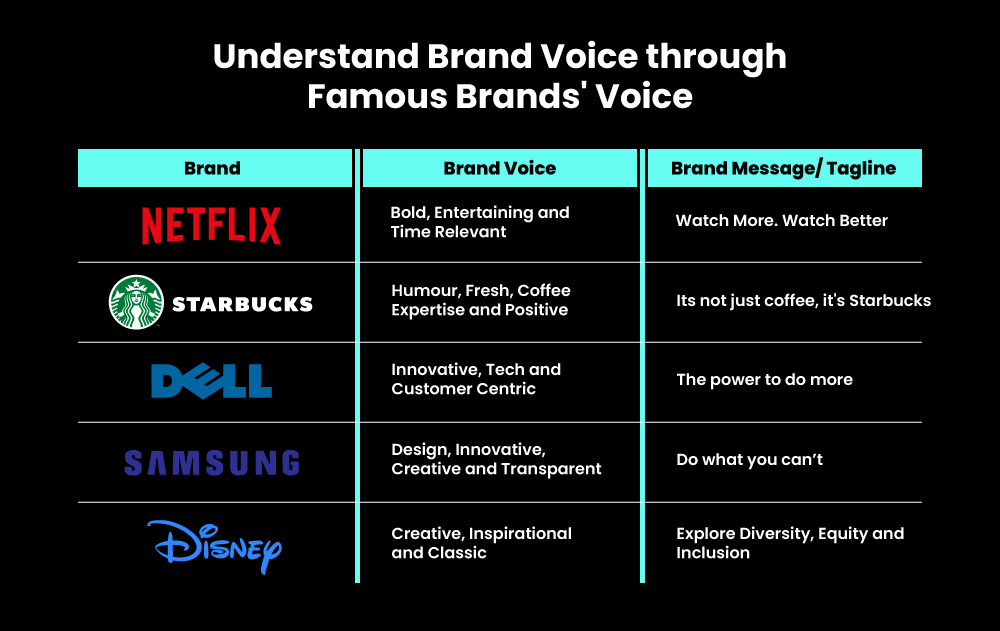
Image Source: Mastroke
The risks of losing brand voice during SEO outsourcing are significant:
- Diluted Brand Recognition - Inconsistent messaging makes it harder for customers to recognize and remember your brand across different touchpoints.
- Reduced User Trust - When your website content doesn't match your brand voice from other channels, it creates confusion and undermines credibility.
- Lower Engagement Rates - Generic content fails to create emotional connections with your audience, leading to higher bounce rates and fewer conversions.
- Damaged Search Performance - Search engines favor content that demonstrates clear expertise and authenticity, which generic outsourced content often lacks.
The solution lies in creating systems and processes that preserve your brand voice while still benefiting from external SEO expertise.
How to Maintain Brand Voice in SEO Outsourcing?
Effective brand voice preservation starts with clear communication. Create comprehensive style guides that go beyond basic grammar rules to capture your client's personality, preferred terminology, and communication patterns. Include specific examples of approved and unapproved language choices.
- Document Voice Characteristics: Record specific tone descriptors (professional but approachable, technical but accessible), preferred pronouns, and industry-specific language preferences. Include examples of how the brand discusses its products, addresses customer pain points, and positions itself against competitors.
- Establish Content Samples: Provide multiple examples of content that perfectly capture the brand voice across different formats—blog posts, product descriptions, social media captions, and email subject lines. These samples serve as reference points for outsourced teams.
- Implement Review Processes: Build regular feedback loops into your workflow. Review initial content samples intensively, providing detailed feedback about voice alignment. Schedule periodic content audits to ensure consistency remains strong over time.
- Select Compatible Partners: Choose SEO outsourcing partners based on their demonstrated ability to adapt to different brand voices. Look for teams with diverse writing experience and established quality control processes.
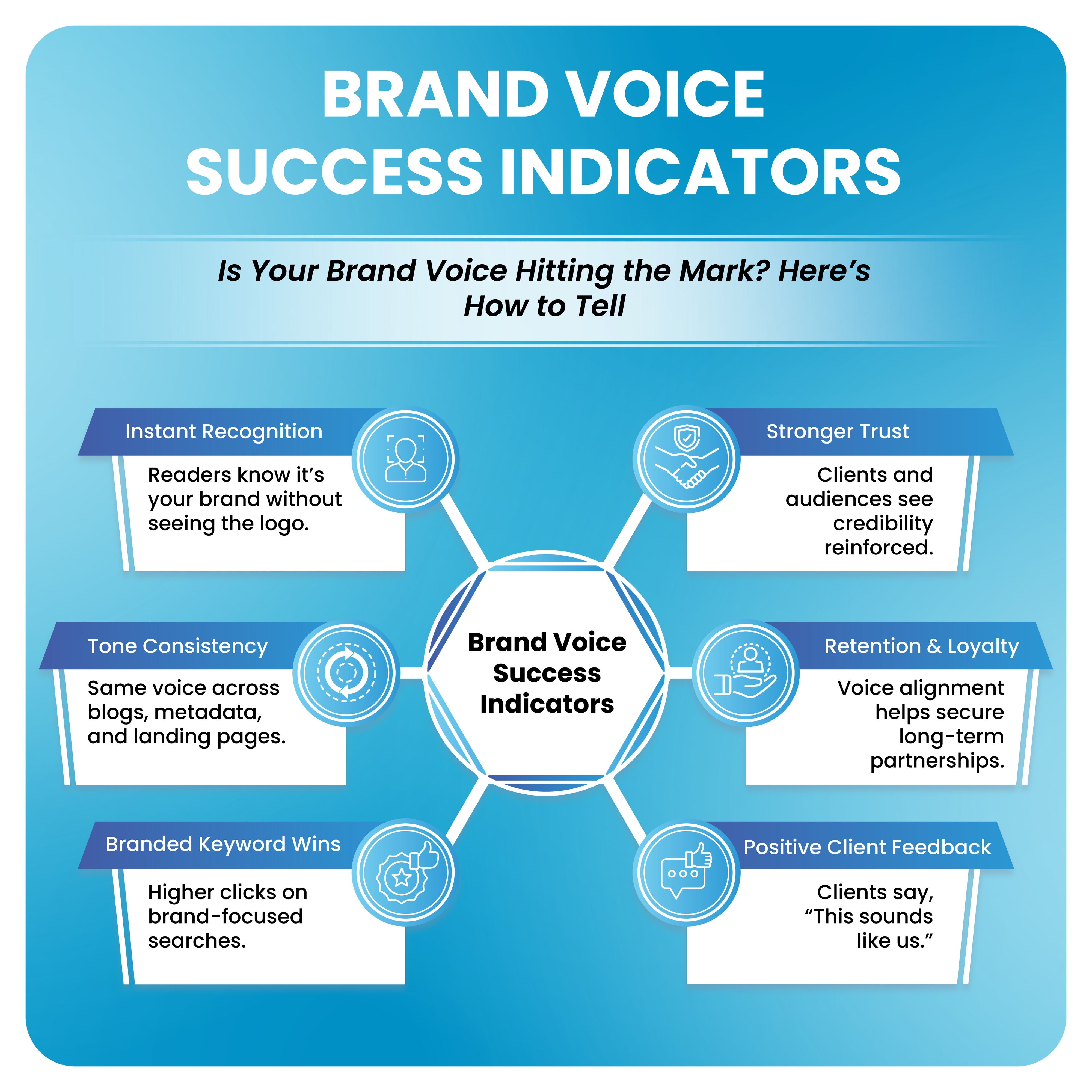
Best Practices for Incorporating Brand Voice into Outsourced Content
Successful brand voice integration requires systematic approaches that address every aspect of content creation. Focus on these key elements:
- Tone Consistency: Define whether the brand voice should be formal or casual, authoritative or collaborative, serious or playful. Create specific guidelines for how this tone should adapt across different content types while maintaining core personality traits.
- Language Patterns: Document preferred vocabulary, phrase structures, and communication styles. Note words the brand always uses, never uses, and preferred alternatives for common industry terms. Include guidance on sentence length, complexity, and rhythm.
- Messaging Alignment: Ensure all content supports broader brand messaging strategies. Outsourced content should reinforce key value propositions, brand differentiators, and customer relationship dynamics established in other marketing materials.
- Cultural Sensitivity: Guide cultural context, especially for global brands. Explain how brand voice should adapt for different markets while maintaining core identity elements.
Once you have the foundational systems in place, focus on these specific practices to ensure consistent brand voice execution:
1. Provide Context-Rich Briefs
Every content brief should include brand voice requirements alongside SEO specifications. Include:
- Clear voice guidelines for each specific piece of content.
- Examples of similar content that capture your brand voice well.
- Specific phrases or terminology that should be included or avoided.
- Target audience information relevant to the content piece.
2. Use Collaborative Tools
Leverage technology to maintain ongoing communication and feedback:
- Shared documents with inline commenting for real-time feedback.
- Project management platforms that track voice-related revisions.
- Communication channels dedicated to brand voice discussions.
3. Implement Staged Reviews
Don't wait until content is complete to evaluate brand voice. Create review stages that include:
- Outline Approval - Ensure the content structure aligns with your brand approach.
- Draft reviews - Provide voice feedback while the content can still be easily adjusted.
- Final approval - Confirm voice consistency before publication.
Challenges of Maintaining Brand Voice When Outsourcing SEO
Understanding common challenges helps you prepare solutions before problems arise:
1. Communication Gaps
Time zone differences, language barriers, and unclear expectations can all lead to brand voice inconsistencies. Address these by:
- Scheduling regular communication windows that work for all parties.
- Creating detailed written guidelines that minimize interpretation errors.
- Using video calls to explain nuanced voice requirements.
2. Limited Industry Knowledge
External teams may lack a deep understanding of your industry's unique communication styles and customer expectations. Combat this through:
- Comprehensive industry background materials.
- Regular updates on industry trends and changes.
- Access to your internal subject matter experts.
3. Quality Control Issues
Managing brand voice consistency across multiple writers and projects requires systematic oversight:
- Template approaches - Generic templates that strip away personality.
- Keyword stuffing - Over-optimization that compromises natural brand voice.
- Inconsistent oversight - Different writers are interpreting the brand voice differently.
- Rushed timelines - Pressure to deliver quickly, leading to voice shortcuts.
Solutions to Preserve Brand Voice in Outsourced SEO Work
Successfully preserving your brand voice during SEO outsourcing requires a strategic approach that begins before you even select a partner. Here are the essential steps:
1. Develop SEO-Specific Brand Guidelines
Standard brand guidelines often don't address SEO-specific scenarios. Create supplementary guidelines that cover:
- How to incorporate target keywords while maintaining a natural voice.
- Preferred approaches for title tags and meta descriptions.
- Brand voice considerations for different content types (blogs, product pages, etc.).
- Guidelines for internal linking anchor text that reflects brand personality.
2. Seamless Onboarding for SEO Partners
- Structured Training: Workshops + sample writing to master brand voice.
- Cultural Immersion: Share mission, values, and content libraries for style learning.
- Mock Campaigns: Test projects with feedback to fix alignment issues early.

3. Create Quality Assurance Checklists
Develop specific checklists for evaluating brand voice in SEO-friendly content:
- Does the content sound like it was written by someone from our company?
- Are keywords integrated naturally without disrupting the voice?
- Does the tone match our brand personality guidelines?
- Would our target audience recognize this as our brand voice?
4. Leverage Technology for Consistency
Several tools can help maintain brand voice consistency:
- Style guide platforms that provide easy access to brand guidelines.
- Content analysis tools that evaluate tone and voice consistency.
- Collaborative editing platforms that track changes and maintain voice standards.
5. Establish Feedback Loops
Create systematic approaches for ongoing voice refinement:
- Regular content reviews focused specifically on brand voice.
- Feedback sessions with outsourcing teams to address voice issues.
- Client surveys to evaluate voice consistency from the customer perspective.
How a White Label SEO Agency Preserves Brand Voice?
Preserving brand voice in SEO outsourcing requires a blend of structure, strategy, and ongoing collaboration. The most effective white label SEO company follows a systematic approach, such as:
- Deep Brand Immersion: Comprehensive onboarding processes that explore company culture, target audience preferences, and competitive positioning. This immersion goes beyond surface-level style guides to understand the emotional connection between brand and audience.
- Centralized Documentation Systems: Master brand guidelines accessible to all team members, updated regularly based on client feedback and brand evolution. These systems ensure consistency across multiple writers and project types.
- Dedicated Brand Management: Assign specific team members the responsibility for brand voice accuracy across all content types. These brand liaisons develop deep familiarity with client voice requirements and serve as quality control checkpoints.
- Customized Content Briefs: Every piece of content includes specific brand voice requirements alongside SEO specifications. Writers receive clear guidance about tone, terminology, and messaging approach for each project.
- Continuous Voice Monitoring: Regular audits of live content ensure brand voice remains consistent over time. These reviews identify voice drift early and implement corrections before brand consistency suffers.
- Integrated Feedback Systems: Client feedback becomes part of the brand voice evolution process. Agencies track voice preferences and adjust guidelines based on client response to different content approaches.
- Writer Specialization: Assign projects to writers with demonstrated expertise in specific brand voices. This specialization improves voice consistency and reduces the learning curve for complex brand personalities.
How DashClicks Helps Master Brand Voice in SEO Outsourcing?
DashClicks understands that maintaining brand voice during SEO outsourcing isn't just about following guidelines—it's about creating systematic processes that ensure consistency at scale. Their approach to brand voice preservation includes several key elements that set them apart from other white label SEO services providers.
The platform begins with comprehensive brand immersion. Rather than simply receiving brand guidelines, DashClicks' content teams participate in detailed onboarding sessions where they learn about each client's unique voice, target audience, and industry context. This immersion goes beyond surface-level style preferences to understand the deeper brand personality and values that should shine through in every piece of content.
DashClicks has developed proprietary brand voice documentation systems that go far beyond typical style guides. These include voice matrices that map different content types to specific voice applications, keyword integration strategies that maintain natural brand voice, and quality assurance checklists specifically designed for brand voice evaluation in SEO content.
Their content production process includes multiple brand voice checkpoints. Before any content reaches the client, it passes through specialized editors who focus specifically on brand voice consistency. These editors are trained to recognize subtle voice variations and ensure that every piece of content sounds like it came directly from the client's internal team.
The platform also provides real-time collaboration tools that make brand voice feedback and refinement seamless. Clients can provide specific voice-related feedback directly within the content management system, creating a continuous improvement loop that strengthens brand voice consistency over time.
Perhaps most importantly, DashClicks assigns dedicated account managers who become intimately familiar with each client's brand voice requirements. These managers serve as brand voice advocates throughout the content creation process, ensuring that voice considerations are never sacrificed for SEO performance or production speed.
Benefits of Maintaining Brand Voice in SEO Outsourcing
When done correctly, maintaining brand voice during SEO outsourcing delivers significant returns:
1. Improved Client Trust
Consistent brand voice reinforces your expertise and professionalism. When your outsourced content sounds like it comes from your internal team, clients feel more confident in your capabilities and are more likely to expand their engagement with your services.
2. Higher Engagement Metrics
Content that maintains an authentic brand voice performs better across all engagement metrics:
- Lower Bounce Rates - Visitors recognize and connect with your brand voice.
- Increased Time on Page - Engaging, brand-consistent content keeps readers interested.
- Better Conversion Rates - Authentic voice builds trust that drives action.
3. Stronger SEO Performance
Search engines increasingly prioritize content that demonstrates expertise and authenticity. Brand-consistent content typically performs better because it:
- Shows clear expertise in your subject matter.
- Builds authority through consistent, professional communication.
- Creates better user engagement signals that improve search rankings.
4. Extended Partnership Success
SEO outsourcing relationships are more successful when brand voice is maintained because:
- Clients are happier with the quality of deliverables.
- Less revision and feedback time is required.
- Long-term partnerships develop based on consistent quality.
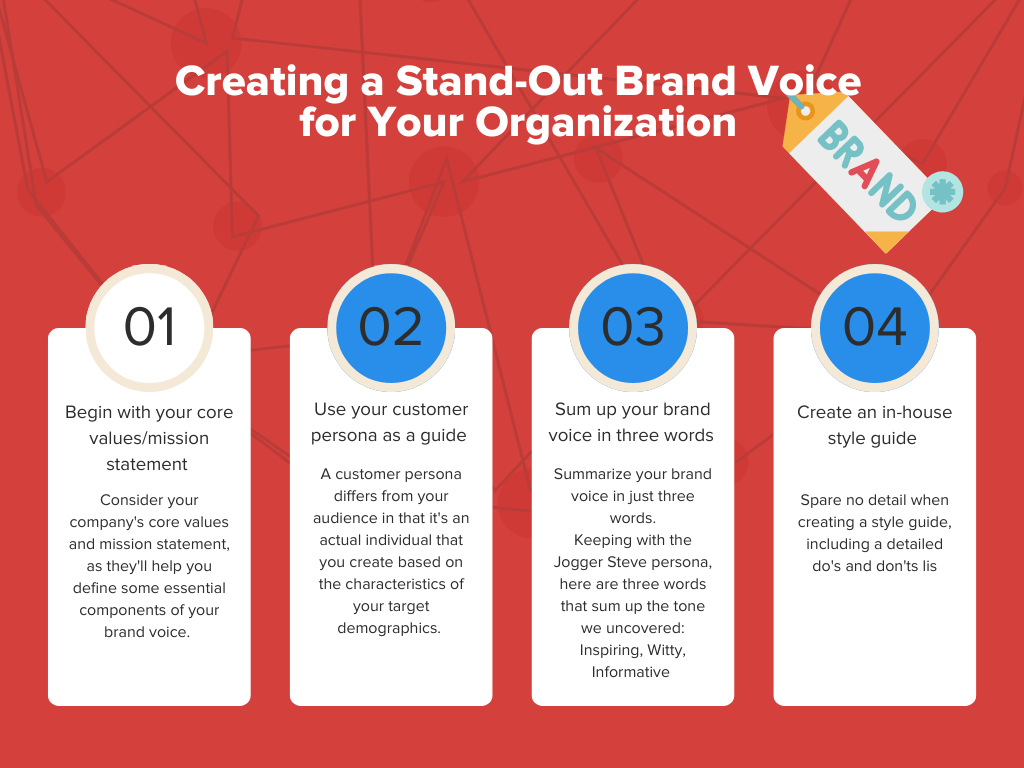
Image Source: TheHoth
Measuring Success in Brand Voice Consistency
Tracking brand voice success requires both qualitative and quantitative approaches:
1. Qualitative Measures
- Editorial Reviews - Regular evaluation of content against brand voice standards.
- Client Feedback - Direct input from clients about voice consistency.
- Brand Voice Audits - Periodic, comprehensive reviews of voice alignment across all content.
2. Quantitative Metrics
- Engagement Rates - Time on page, bounce rates, and social shares.
- Conversion Metrics - How brand-consistent content performs in driving desired actions.
- Search Performance - Rankings and organic traffic for brand-consistent content vs. generic content.
3. Brand Voice Scorecards
Develop systematic scoring approaches that evaluate:
- Voice consistency across different content types.
- Keyword integration without voice compromise.
- Audience appropriateness of voice application.
- Overall brand alignment in SEO content.
The Strategic Advantage of Brand Voice Mastery
Mastering brand voice in SEO outsourcing isn't just about maintaining consistency—it's about creating a competitive advantage. Companies that successfully preserve their unique voice while scaling through outsourcing often see benefits that extend far beyond SEO performance.
Your brand voice becomes a differentiating factor in crowded markets. While competitors may have similar services or products, your unique communication style creates memorable experiences that drive customer loyalty. This differentiation becomes even more valuable as markets become increasingly competitive.
Strong brand voice consistency also streamlines your entire content marketing operation. When outsourcing partners truly understand and can execute your brand voice, content creation becomes faster and requires fewer revisions. This efficiency allows you to scale content production without sacrificing quality or authenticity.
Building Long-Term Success Through Voice-Consistent SEO Outsourcing
The most successful SEO outsourcing relationships are built on a shared understanding of brand voice requirements. This means treating voice consistency not as an afterthought, but as a core requirement that guides partner selection and relationship management.
Ready to master brand voice in your SEO outsourcing efforts? DashClicks provides the systems, processes, and expertise needed to maintain your unique brand personality while scaling your SEO operations. Their proven approach to brand voice preservation has helped hundreds of agencies deliver consistent, high-quality SEO content that truly represents their clients' brands.
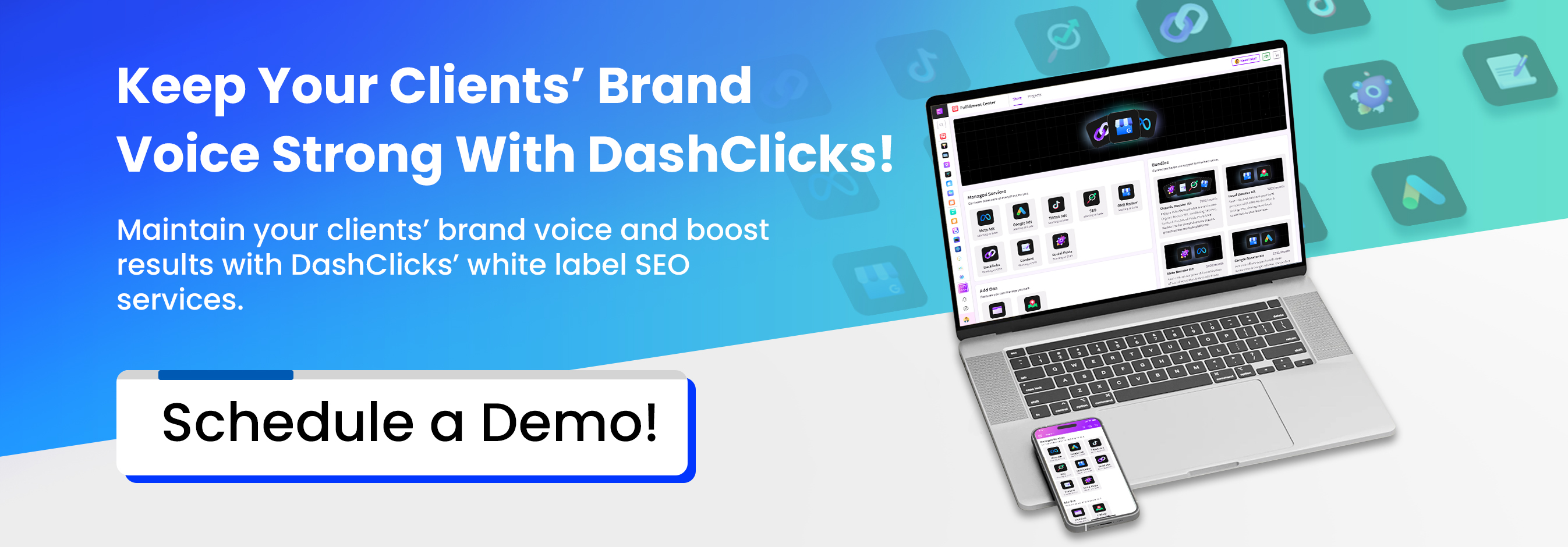

Optimizing Voice Search Content via White Label SEO Services
Voice search has changed how people find information online. With smart speakers in millions of homes and virtual assistants on every smartphone, businesses need to adapt their SEO strategies to stay visible. For agencies juggling multiple clients and services, partnering with white label SEO providers offers a smart solution to master voice search optimization without stretching resources thin.
This comprehensive guide explores how agencies can use white label SEO services to optimize voice search content, boost client rankings, and stay ahead of the competition. We'll cover practical strategies, current statistics, and actionable insights that can transform your agency's approach to voice search.
Why Voice Search Matters More Than Ever?
Voice search isn't just a trend—it's become a fundamental part of how consumers interact with technology. The numbers tell a compelling story about this shift in user behavior.
Statistics and Trends
Recent data reveals that 27% of the global online population uses voice search on mobile devices. This represents millions of potential customers who rely on spoken queries rather than typed searches. Even more telling, 58% of consumers use voice search to find local business information, making it essential for businesses with physical locations or local service areas.
The growth trajectory shows no signs of slowing down. Smart speaker ownership has reached 35% of US adults, with many households owning multiple devices. These users aren't just asking about the weather—they're searching for products, services, and local businesses through voice commands.
The Voice Search Revolution: How User Behavior Is Changing?
Voice search has fundamentally altered search patterns in three key ways:
Conversational queries are replacing short-tail keywords. Instead of typing "pizza Chicago," users now ask, "Where can I get the best deep dish pizza near me?" This shift requires content that matches natural speech patterns and longer, more specific phrases.
There's been a surge in "near me" and local-intent voice searches. Voice search users are often mobile and looking for immediate solutions. They want businesses they can visit or services they can access quickly in their area.
Search engines are using AI to understand context-driven results. Modern algorithms consider tone, intent, and location when processing voice queries. They're getting better at understanding what users want, even when the query isn't perfectly phrased.
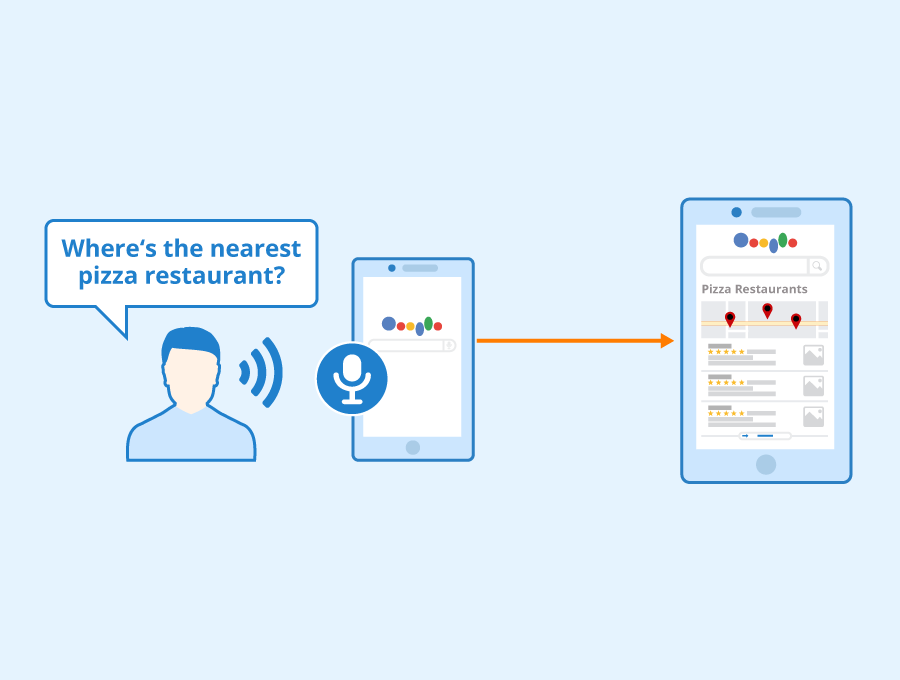
Image Source: Seobility
Impact on Local Businesses
Local businesses feel the impact of voice search most directly. When someone asks their smart speaker for a "good Italian restaurant nearby," they expect relevant, local results. Businesses that haven't optimized for these conversational, location-based queries miss out on qualified leads who are ready to make purchasing decisions.
This creates both challenges and opportunities. Businesses need to ensure their online presence includes the natural language phrases their customers use when speaking to devices. They also need to maintain consistent information across all digital platforms so voice assistants can confidently recommend them.
Why Agencies Need White Label SEO for Voice Optimization?
Voice search optimization requires specialized knowledge and dedicated time—two resources that many agencies struggle to maintain while serving multiple clients. This is where white label SEO outsourcing becomes valuable.
Why Outsourcing Makes Sense for Voice Search?
Voice search optimization is resource-intensive because it touches every aspect of SEO. Agencies need to research conversational keywords, update content strategies, implement technical improvements, and monitor performance across different voice platforms. For agencies already managing multiple service offerings, adding this specialized expertise in-house can strain budgets and timelines.
White label SEO providers have already invested in the tools, training, and processes needed for effective voice search optimization. They understand the technical requirements and stay current with algorithm changes that affect voice search results.
The Advantages
- Specialized Expertise in Conversational Content Creation: White label SEO providers understand how to craft content that sounds natural when read aloud by voice assistants. They know how to structure answers that directly address common voice queries.
- Technical Setup Handled Professionally: Schema markup, page speed optimization, and mobile-first indexing require technical expertise that takes time to develop. White label SEO providers have teams dedicated to these crucial backend improvements.
- Continuous Algorithm Tracking and Adaptation: Voice search algorithms evolve rapidly as AI technology advances. White label SEO providers monitor these changes and adjust strategies accordingly, ensuring clients maintain their visibility.
- Scalability Without Overhead: Agencies can serve more clients without hiring specialized voice SEO staff. This allows them to expand their service offerings and increase revenue while maintaining quality standards.
- Access to Premium Tools Without Additional Investment: Professional voice search optimization requires specialized software for keyword research, performance tracking, and competitor analysis. White label SEO providers include access to these tools in their service packages.
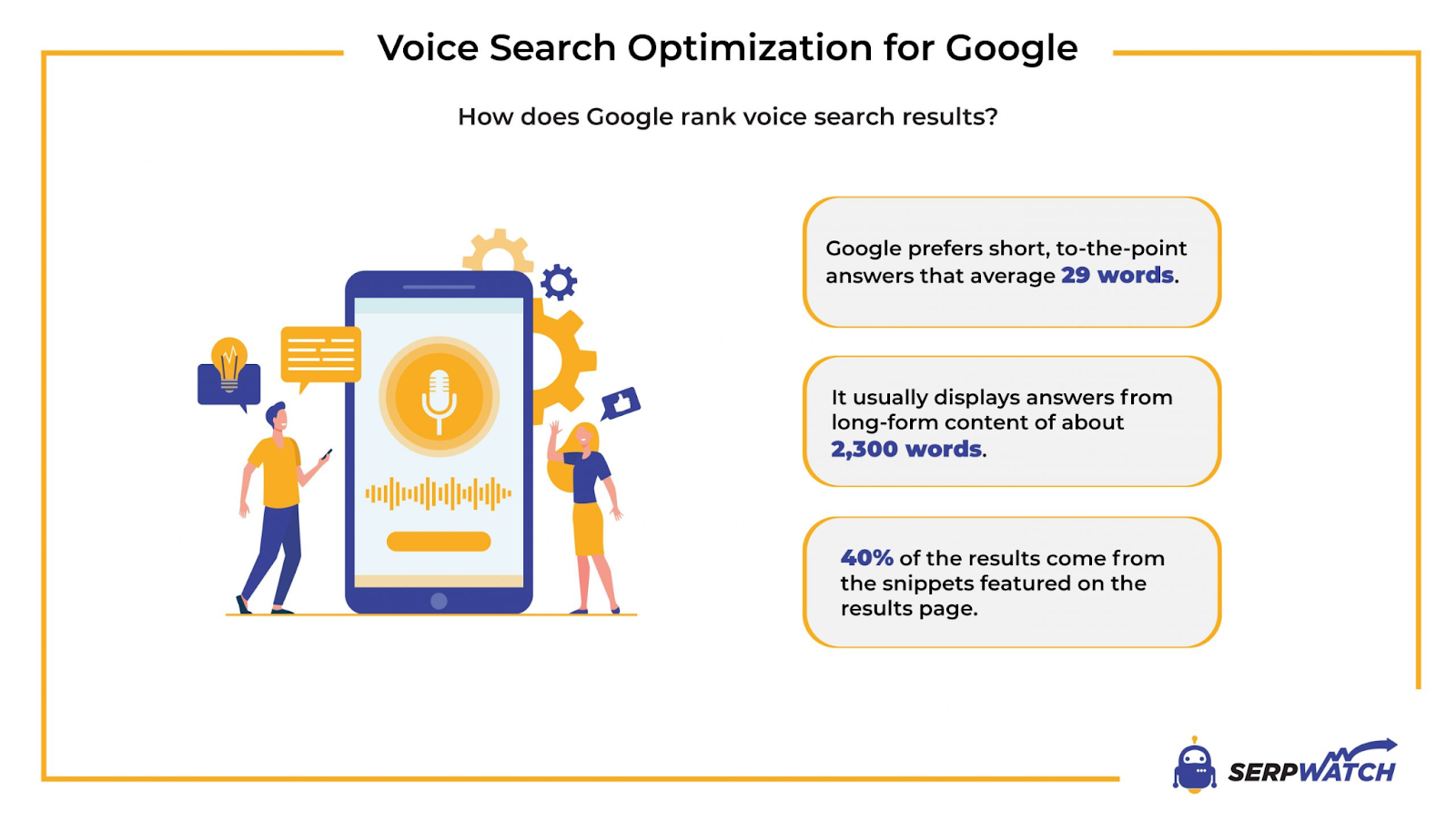
Image Source: SERPWatch
Key Strategies for Voice Search Optimization Using White Label SEO Services
Effective voice search optimization requires a multi-faceted approach that addresses content, technical elements, and local search factors. Here's how white label SEO services can implement these strategies efficiently.
A. Focus on Conversational Keywords and Phrases
Voice queries sound different from typed searches. Users speak in complete sentences and ask direct questions. White label SEO providers excel at identifying these natural speech patterns and incorporating them into content strategies.
- Identify Natural Speech Patterns: Instead of focusing solely on "marketing agency," voice-optimized content targets phrases like "What's the best marketing agency near me?" or "How do I choose a digital marketing company?"
- Use AI Tools to Simulate Human Voice Queries: Advanced keyword research tools can predict how people phrase voice searches related to specific industries or services. White label SEO providers use these insights to create comprehensive keyword strategies.
- Implement Long-Tail Keyword Strategies Effectively: Voice searches tend to be longer and more specific than typed queries. White label SEO teams understand how to naturally incorporate these longer phrases without compromising content quality.
B. Optimize for Local SEO
Local optimization becomes even more critical with voice search since many queries have local intent.
- Update Google Business Profiles Completely: This includes accurate business hours, contact information, photos, and regular posts. Voice assistants often pull information directly from these profiles.
- Maintain NAP Consistency Across Directories: Name, Address, and Phone number information must match exactly across all online directories. Inconsistencies confuse voice assistants and hurt local rankings.
- Target Location-Based Keyword Phrases: Content should include natural references to the service area, local landmarks, and community-specific terms that residents use.
- Build Location-Specific Content: Creating pages that address local needs and reference local events or characteristics helps establish relevance for location-based voice searches.
C. Improve Technical SEO for Voice Search Compatibility
Technical optimization ensures that voice assistants can easily access and understand website content.
- Implement Schema Markup Strategically: Structured data helps search engines understand content context and increases the likelihood of appearing in featured snippets—a key source for voice search answers.
- Optimize for Featured Snippets: Voice assistants often read featured snippet content when answering questions. Content should be structured to provide clear, concise answers that search engines can easily extract.
- Ensure Fast Page Speeds: Voice search users expect immediate answers. Slow-loading pages get bypassed for faster alternatives, making speed optimization crucial for voice search success.
D. Create Voice Search-Friendly Content
Content optimization for voice search requires a different approach than traditional SEO writing.
- Write in a Conversational Tone: Content should sound natural when read aloud. This means using contractions, shorter sentences, and everyday language rather than formal business terminology.
- Use FAQ Formats Strategically: The FAQ pages directly address the question-and-answer format of voice searches. They provide opportunities to target specific voice queries while improving overall user experience.
- Structure Content for Easy Extraction. Use headers, bullet points, and clear topic divisions that make it easy for search engines to identify relevant information for specific voice queries.
E. Mobile Optimization and Page Speed
Mobile optimization becomes even more important with voice search since many voice queries come from mobile devices.
- Prioritize Mobile-First Design: Websites must work perfectly on mobile devices since voice search users often continue their journey on smartphones or tablets.
- Implement Accelerated Mobile Pages (AMP) Where Appropriate: Faster loading times improve the likelihood of being selected for voice search results.
- Conduct Regular Technical Audits: White label SEO providers can perform comprehensive technical audits to identify and fix issues that might prevent voice assistants from accessing content.
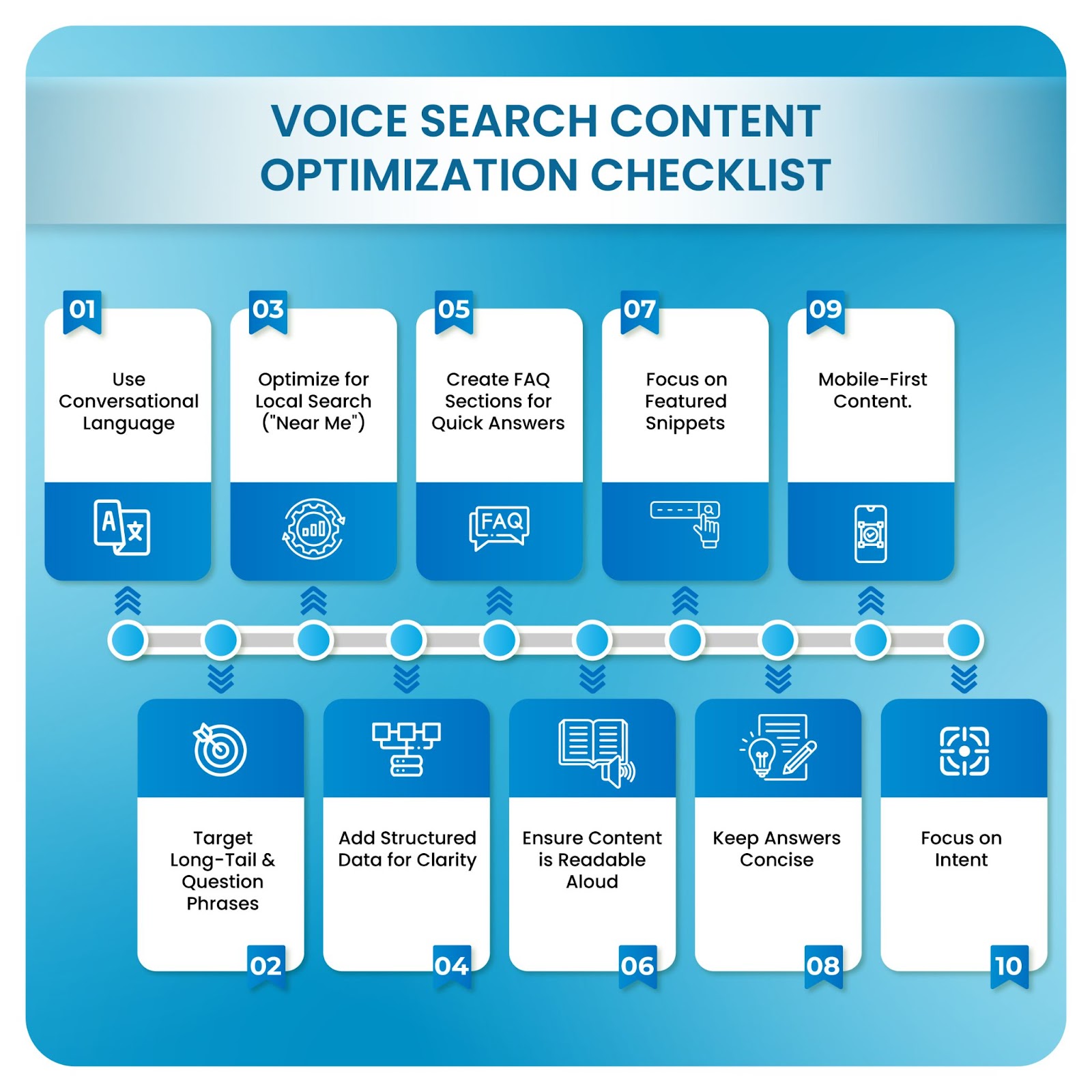
Advantages of Partnering With a White Label SEO Agency
Partnering with a white label SEO agency offers numerous benefits that go beyond just voice search optimization.
- Access to Specialized Voice SEO Expertise: White label SEO providers have dedicated teams trained specifically in voice search optimization. These specialists understand the nuances of conversational content, technical requirements, and local optimization strategies that drive voice search success.
- Faster Implementation and Scalability: Ready-to-deploy processes allow agencies to roll out voice search optimization for multiple clients simultaneously. This scalability is particularly valuable during high-demand periods or when acquiring new clients rapidly.
- Advanced Tools Without Additional Investment: Premium voice search tools can cost thousands of dollars annually. White label SEO providers include access to these tools in their service packages, giving agencies professional-grade resources without separate licensing costs.
- Consistent, High-Quality Deliverables: Standardized processes ensure every client receives thorough voice search optimization. White label SEO providers use proven frameworks that deliver consistent results across different industries and market conditions.
- Local Search Mastery: Voice search success often depends on local optimization expertise. White label SEO providers understand the intricacies of Google Business Profile optimization, local citations, and location-based content strategies.
- Continuous Algorithm Monitoring: Voice search algorithms change frequently as AI technology advances. White label SEO providers track these changes and update strategies proactively, ensuring clients maintain their visibility without agencies having to monitor multiple algorithm updates.
- Reduced Operational Burden: Agencies can focus on client acquisition, relationship management, and strategic growth instead of handling technical execution and performance monitoring.
- Data-Driven Reporting: White label SEO providers deliver comprehensive reports showing voice search traffic growth, featured snippet wins, and local ranking improvements. This data helps agencies demonstrate value to clients and identify expansion opportunities.
- Competitive Edge for Agencies: Offering voice search optimization positions agencies as forward-thinking partners who understand emerging marketing trends. This differentiation helps win new clients and retain existing ones.
Measuring and Refining Voice Search Success
Tracking voice search performance requires different metrics and approaches than traditional SEO monitoring.
A. Performance Metrics
- Voice Traffic Share: Track the percentage of organic traffic coming from voice searches. This metric shows whether voice optimization efforts are attracting the intended audience.
- Featured Snippet Rankings: Monitor how many featured snippets client websites earn, since voice assistants frequently source answers from these positions.
- Local Pack Ranking Improvements: Track improvements in local search visibility, particularly for "near me" queries that often originate from voice searches.
- Question-Based Keyword Rankings: Monitor performance for conversational, question-based keywords that mirror natural speech patterns.
- Organic Traffic From Long-Tail Keywords: Voice searches tend to be longer and more specific, so tracking traffic from these extended phrases indicates voice search success.
B. Adapting to Trends
White label SEO providers continuously monitor algorithm updates and adjust strategies accordingly. They track changes in how voice assistants select and present information, ensuring optimization efforts remain effective as technology evolves.
C. Client Satisfaction
Regular performance reporting by white label SEO providers improves client trust and satisfaction. Detailed reports show progress in voice search visibility, local rankings, and organic search traffic growth, making it easy for agencies to demonstrate value.
How DashClicks Optimizes Voice Search Content?
DashClicks understands the growing importance of voice search optimization and offers comprehensive white label SEO services designed to help agencies capitalize on this trend. Their approach combines technical expertise with practical implementation, ensuring clients achieve measurable results in voice search visibility.
The DashClicks team specializes in conversational content creation, local SEO optimization, and the technical elements that make websites voice-search friendly. They provide detailed reporting that shows improvements in voice search traffic, featured snippet wins, and local ranking boosts, helping agencies demonstrate clear value to their clients.
Common Pitfalls in Voice Search SEO (and How White Label SEO Services Prevent Them)
Many businesses make critical mistakes when attempting voice search optimization independently. Understanding these pitfalls helps agencies appreciate the value of professional white label local SEO services.
1. Ignoring Conversational Tone
The Mistake: Continuing to optimize for short, choppy keywords instead of natural speech patterns.
How White Label Services Help: Professional content creators understand how to write in a conversational tone that matches how people speak to voice assistants.
2. Missing Schema Markup Opportunities
The Mistake: Failing to implement structured data that helps search engines understand content context.
How White Label Services Help: Technical teams systematically implement appropriate schema markup to improve featured snippet visibility and voice search eligibility.
3. Overlooking Local Search Optimization
The Mistake: Neglecting Google Business Profile optimization and local citation building.
How White Label Services Help: Local SEO specialists ensure all local search elements are properly optimized and maintained for maximum voice search visibility.
4. Slow Mobile Page Speeds
The Mistake: Ignoring page speed optimization, especially on mobile devices.
How White Label Services Help: Technical audits identify and resolve speed issues that prevent voice assistants from efficiently accessing content.
5. Not Tracking Voice-Specific KPIs
The Mistake: Using traditional SEO metrics that don't capture voice search performance.
How White Label Services Help: Comprehensive reporting includes voice-specific metrics that show actual progress in voice search visibility and traffic.

The Future of Voice Search and White Label SEO
Voice search technology continues to advance rapidly, creating new opportunities and challenges for businesses and agencies.
- AI-Driven Personalization: Voice assistants are becoming more predictive and personalized, using machine learning to understand user preferences and provide more targeted recommendations. This trend will require more sophisticated optimization strategies that consider user behavior patterns and preference signals.
- Multilingual Voice Search Optimization: As voice technology expands globally, multilingual optimization becomes increasingly important. Agencies serving diverse markets will need expertise in optimizing content for voice searches in multiple languages.
- Voice Commerce Growth: Shopping through voice assistants is growing rapidly, creating new opportunities for e-commerce businesses. Voice search optimization will need to include product descriptions, pricing information, and purchase facilitation.
- Natural Language Processing Advances: Improvements in natural language processing will make voice assistants better at understanding context, intent, and nuanced queries. This evolution will require more sophisticated content strategies that anticipate and address complex user needs.
- Zero-Click Search Impact: The rise of zero-click searches, where users get answers without visiting websites, affects how businesses approach voice search optimization. Strategies will need to balance providing helpful information with driving website traffic.
- Voice-Based Advertising: Voice advertising is emerging as a new channel for reaching consumers. Agencies will need to understand how voice ads work and how they interact with organic voice search results.
Transform Your Agency's Voice Search Strategy
Voice search optimization represents a significant opportunity for agencies willing to embrace this evolving technology. The statistics are clear: consumers are increasingly using voice search for business discovery, product research, and local information. Agencies that master voice search optimization now will have a competitive advantage as this trend continues to grow.
White label SEO services provide the expertise, tools, and scalability needed to implement effective voice search strategies across multiple clients. They handle the technical complexities, content optimization, and performance monitoring that make voice search campaigns successful.
The future of search is conversational, local, and immediate. Businesses that optimize for voice search will connect with customers at the moment they're seeking solutions. Agencies that offer comprehensive voice search optimization will position themselves as essential partners in their clients' digital marketing success.
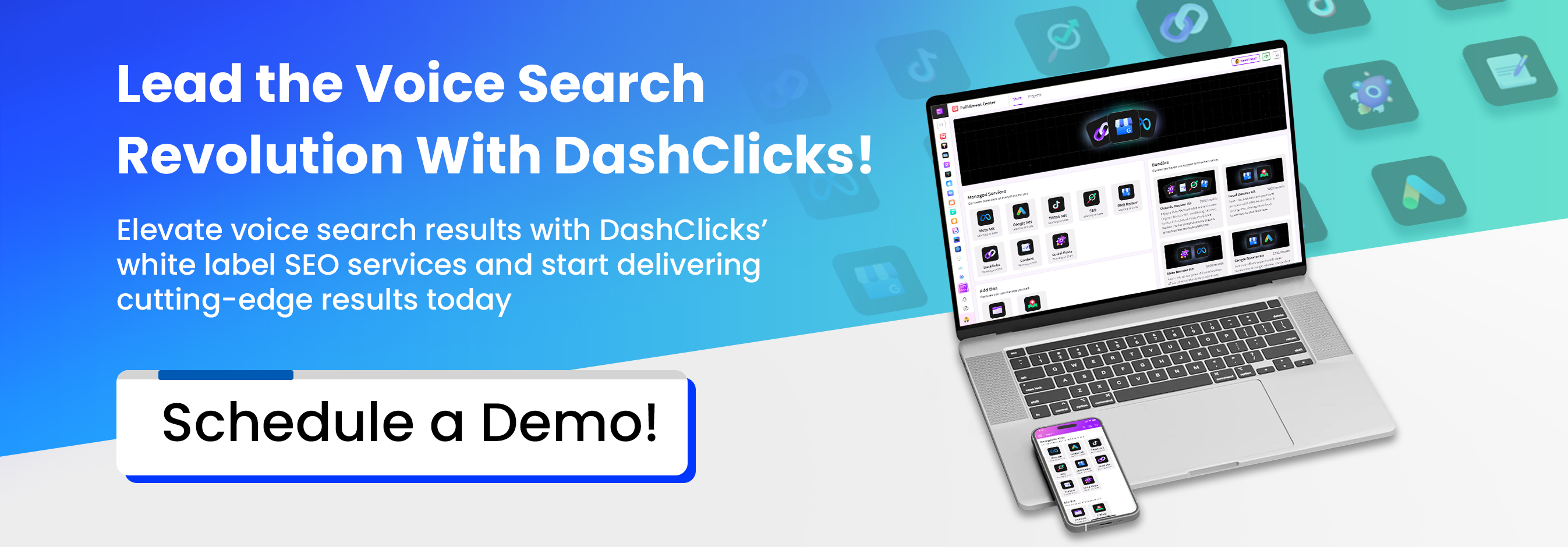
.jpg)
Boost Agency Revenue by Leveraging SEO Resellers (No New Hires Needed)
As digital marketing companies grow, they have to deal with the same problem over and over again: how to meet the needs of more clients without adding too many people to the team. It might seem like the next step to take is finding full-time workers, but that involves additional issues like payroll, instructing them, maintaining them, and paying for their overhead. This is where SEO resellers come in and change the game.
Agencies can grow their business, keep quality high, and meet deadlines without raising costs or employee stress by outsourcing search engine optimization to a reputable SEO reseller. Let's talk about how SEO resellers help companies handle a lot of clients well and how you can use this model to grow in a way that doesn't harm the wider community.
What Is an SEO Reseller?
An SEO Reseller is a white-label service provider that works for another company to provide SEO services. The reseller does the work, like audits, on-page optimization, link building, content writing, and so on. You just put your own name on the deliverables.
Think of it as SEO knowledge that you can use right away. The reseller is in charge of service and results, while you are focused on getting new clients and keeping old ones.
Why Agencies Have Trouble With a Lot of Clients?
It may sound exciting to grow a digital agency, but in fact, growth causes issues.
- It takes time to hire people. Finding and training new SEO staff can take weeks or even months.
- Every recruit doesn't always meet your agency's talent requirements.
- There are costs associated with training new employees. Even experienced workers need to be familiar with your tools and methods.
- Fixed costs include full-time salaries, perks, and building up a business. If a new business slows down, these costs can add up quickly.
When agencies try to do too much on their own, they often miss individuals, make teams stressed, and result in clients being less happy.

An Intelligent Approach to SEO Reseller Model
Working with an SEO reseller can help you get past these growth problems.
- Instant Scalability: Resellers of SEO services already have teams, tools, and methods in place that are proven to work. You can get a lot more clients quickly without hiring more people. Your system can handle 5 or 50 new clients.
- Pay Attention to What You Do Best: Getting new clients, coming up with strategies, and building relationships are probably what your business does best. SEO resellers take care of the technical side of things, so you can focus on building your business instead of running campaigns yourself.
- No Trouble Hiring: Don't worry about advertisements for jobs, interviews, or getting started. When you offer SEO services, you don't have to deal with HR issues and can still provide excellent services.
- Operating at a Low Cost: Most reseller services work on a per-project or charge basis, which lets you plan your costs and make more money. You don't have to pay full-time rates, and you can change your costs based on how many clients you get.
- Assurance of White-Label Delivery: Most SEO resellers use a "white-label" model, which means that your customers won't be able to tell they're there. Your logo shows up on all reports, dashboards, and contact materials, making you the face of all services. including direct mail service.
- White-Label Website Development: For successful SEO results in 2025, you need a Page Speed score higher than 90+. To achieve this, you should use modern frameworks like Next.js, React, and Tailwind CSS for SEO-optimized websites. You can even use Next.js templates to build faster-loading sites.
How to Pick the Best SEO Reseller?
There are different kinds of SEO resellers. Look for the following issues.
- To be sure of past results, ask for case studies, achievement reports, or references.
- You'll need someone who keeps you up to date, responds quickly, and is honest about due dates and tasks.
- If you need a complete strategy or just help building links, a good reseller will be able to give you what you need.
- Make sure they can give everything with your agency's logo on it, like communication templates and reports.
- If your resellers use analytics, A/B testing, and real measurements, they are more likely to get real results for your clients.

What Kinds of Services Do SEO Resellers Give?
Reputable SEO resellers may handle all aspects of SEO, from beginning to end.
- SEO technical audits
- On-page optimization includes things like meta tags, header layout, and internal links
- Strategy and Keyword Research
- Making content (web pages, blogs, etc.)
- Local SEO and GMB Tuning
- Off-Page SEO and Building Links
- Reporting and analytics every month
Based on how your business works, you can either give these as part of a complete SEO package or let your clients pick and choose.
In addition to outsourcing technical SEO work, agencies can further enhance client deliverables by integrating tools like an AI humanizer into their workflow. These tools refine AI-generated content to sound more natural, relatable, and brand-consistent, helping agencies maintain quality and authenticity while scaling content production through an SEO reseller model.
When Should You Use an SEO Reseller?
If any of these sound like you, it might be time to think about SEO reselling.
- Your team can't handle all the leads you're getting.
- Your overworked workforce is lowering quality.
- You don't want to hire because of the cost or the unknown.
- You'd like to offer more services, like SEO, but you don't have enough skills in-house.
- You'd rather be building your business than managing work.
Resellers of SEO services are a low-risk, high-impact way to grow while staying lean and flexible.
Real-Life Scaling Example
For example, imagine that your company handles 15 SEO clients and gets 10 extra clients out of the blue. Your internal team might not be able to handle everything without a supplier. Not so with a reseller.
- Content, keyword research, and backlinks are assigned.
- Timelines and reports are managed by your project manager.
- Your clients will still get reports and updates under your brand.
- You manage to boost your revenue without adding more staff.
You can quickly scale with this model, and the quality of delivery remains high even during times of high growth. Mention how using a coworking space app can help teams coordinate better during rapid scaling phases.
DashClicks: Your Trusted White Label SEO Reseller Partner
DashClicks is a leading white label SEO reseller built specifically for marketing agencies that want to scale without the overhead of hiring in-house teams. Our fulfillment experts handle everything from keyword research, technical audits, and on-page optimization to link building, content creation, and reporting—all under your agency’s brand.
With DashClicks, you get a fully managed SEO solution that’s client-ready from day one. Every deliverable, dashboard, and report carries your agency’s logo, ensuring seamless white-label delivery that keeps your brand front and center. We help agencies save time, cut costs, and serve more clients while maintaining high-quality results and transparency.
Whether you’re managing five clients or fifty, DashClicks’ scalable SEO reseller services give your agency the flexibility to grow revenue, retain more clients, and stay competitive—all without adding internal overhead.
Wrapping It Up
Hiring new people isn't always the best way to grow. SEO providers are the best way to get more clients, serve them better, and keep your team small. They offer the best combination of knowledge, scalability, and flexibility, without the long-term commitment of hiring someone full-time. And in the fast-paced online marketplace of right now, companies that are flexible are able to stay in front of the competition.
Your growth is being slowed down by delivery. You can grow your business with confidence, serve more clients, and make your agency model smarter by using SEO resellers.
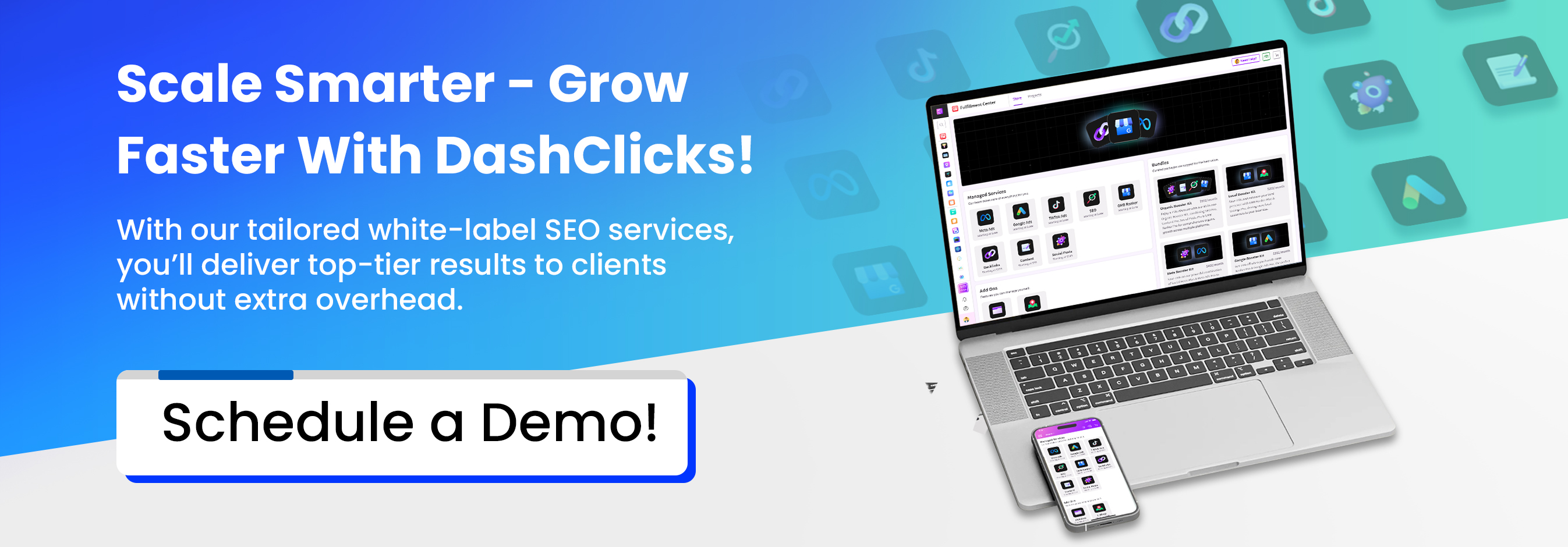

No results found.
Please try different keywords.
Get Started with
DashClicks Today
Get found online, convert leads faster, generate more revenue, and improve your reputation with our all-in-one platform.
.svg)
Unlimited Sub-Accounts
.svg)
Unlimited Users
.svg)
All Apps
.svg)
All Features
.svg)
White-Labeled
.svg)
Active Community
.svg)
Mobile App
.svg)
Live Support
.svg)
100+ Tutorials
.svg)
Unlimited Sub-Accounts
.svg)
Unlimited Users
.svg)
All Apps
.svg)
All Features
.svg)
White-Labeled
.svg)
Active Community
.svg)
Mobile App
.svg)
Live Support
.svg)
100+ Tutorials
.svg)
Unlimited Sub-Accounts
.svg)
Unlimited Users
.svg)
All Apps
.svg)
All Features
.svg)
White-Labeled
.svg)
Active Community
.svg)
Mobile App
.svg)
Live Support
.svg)
100+ Tutorials



.svg)
.svg)
.svg)
.svg)
.svg)


